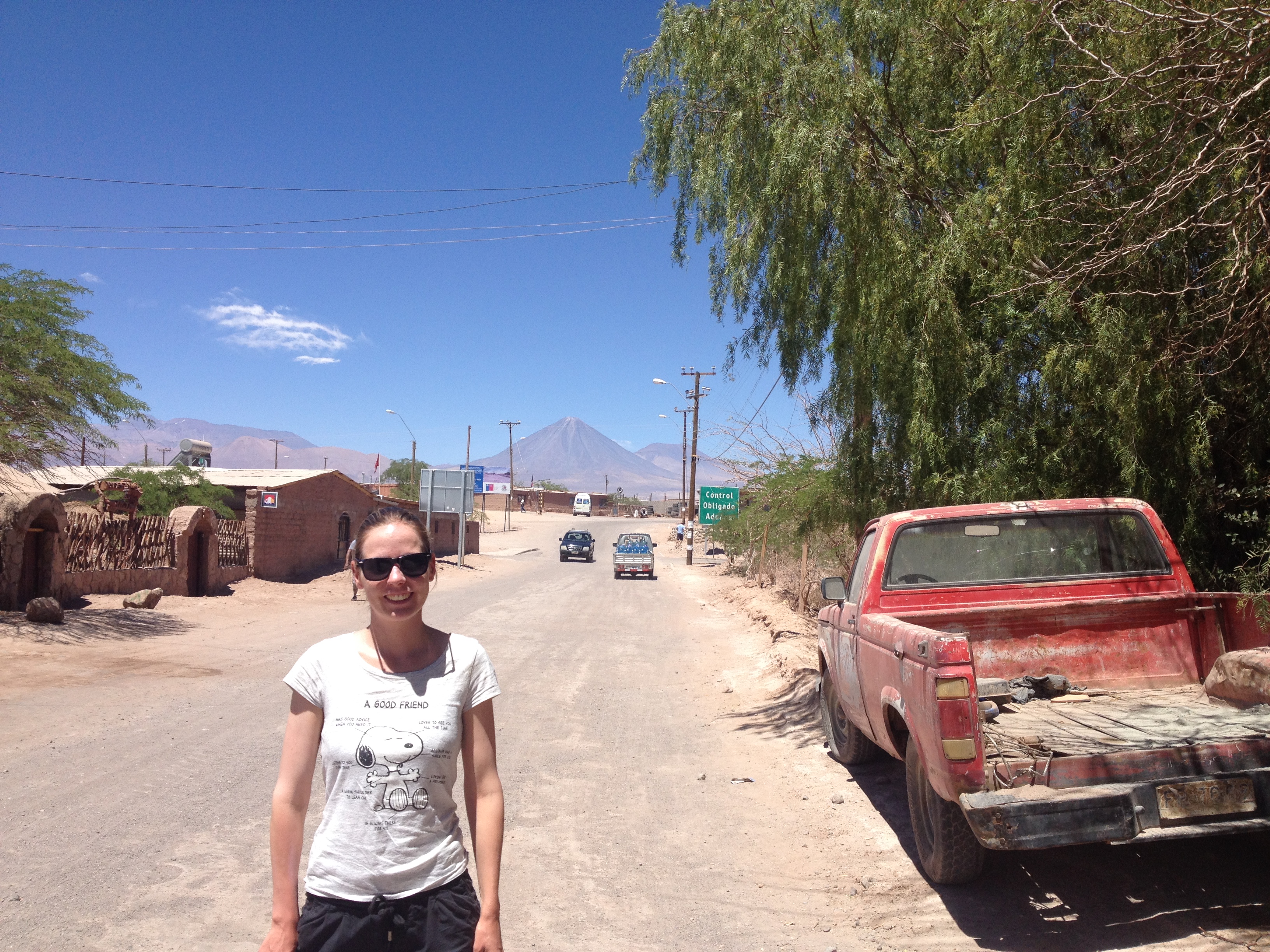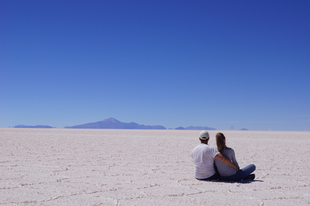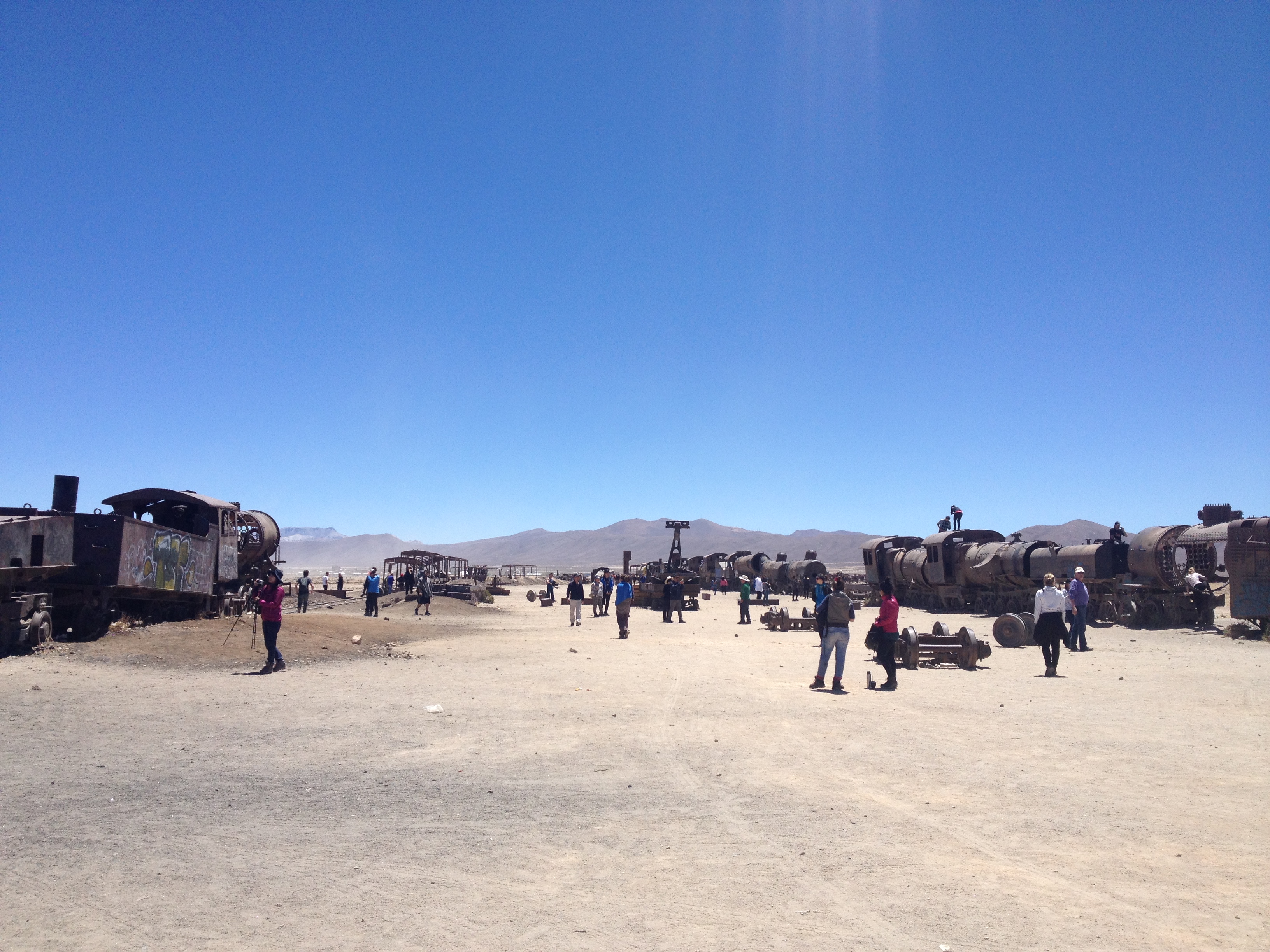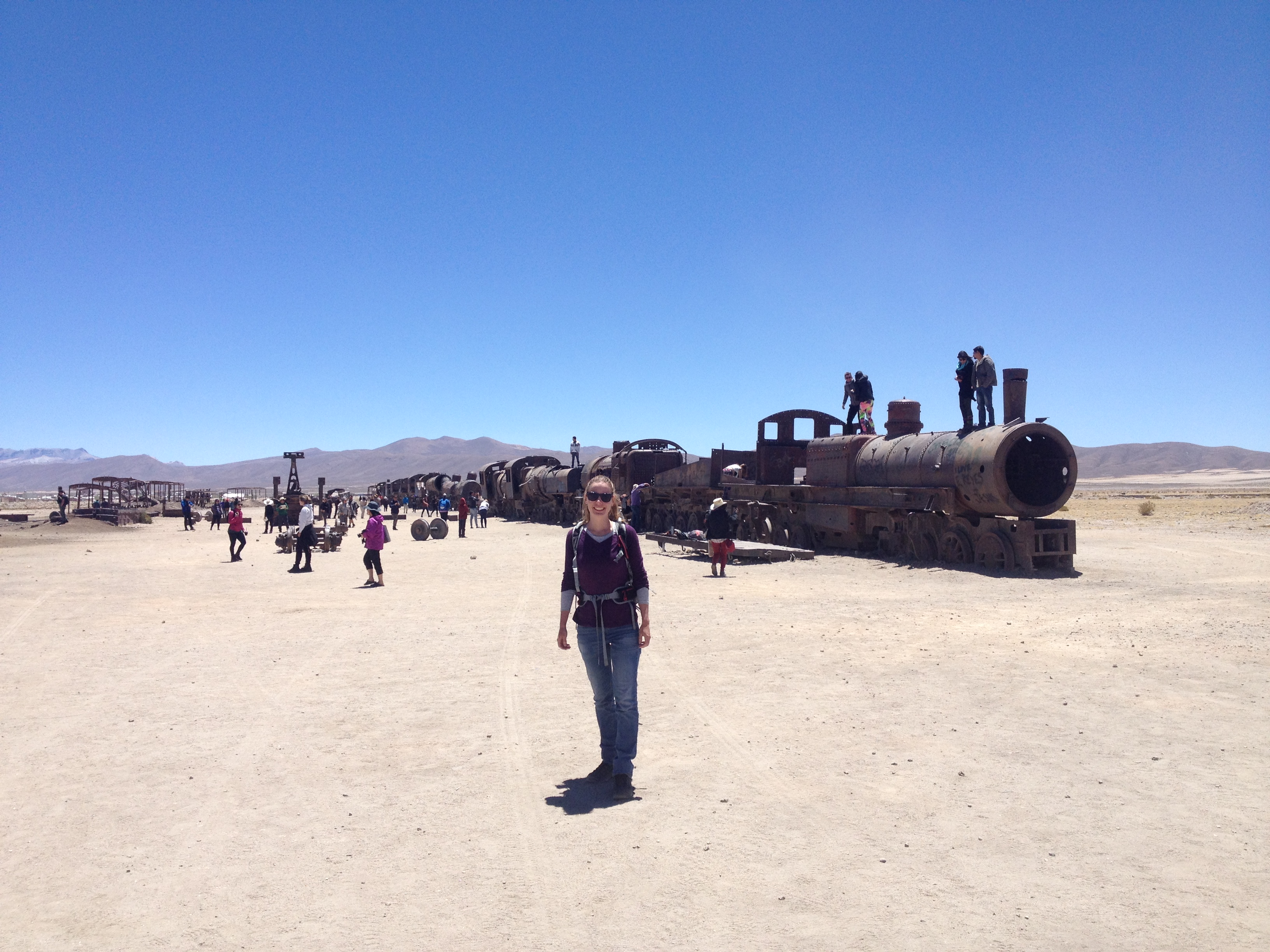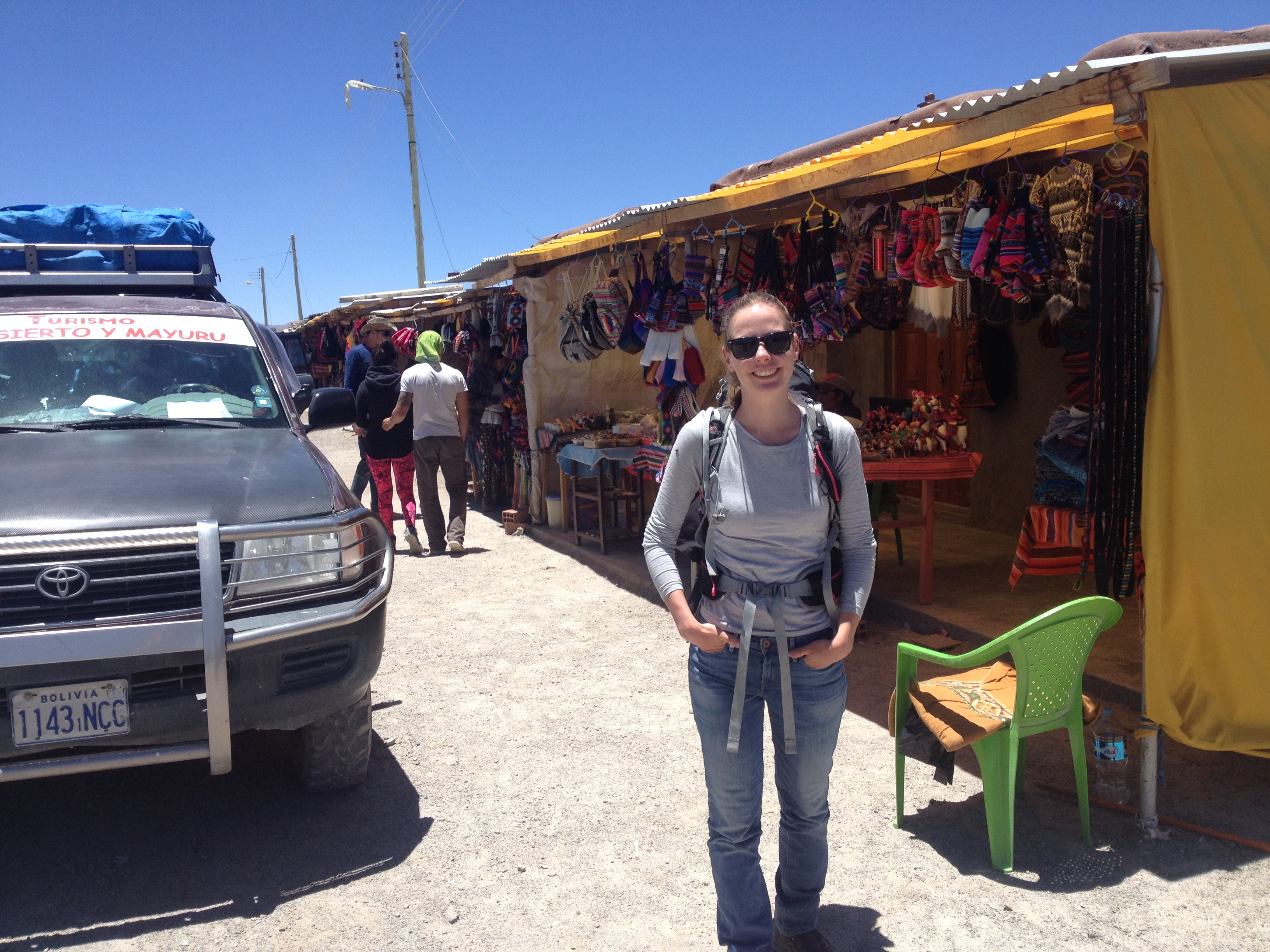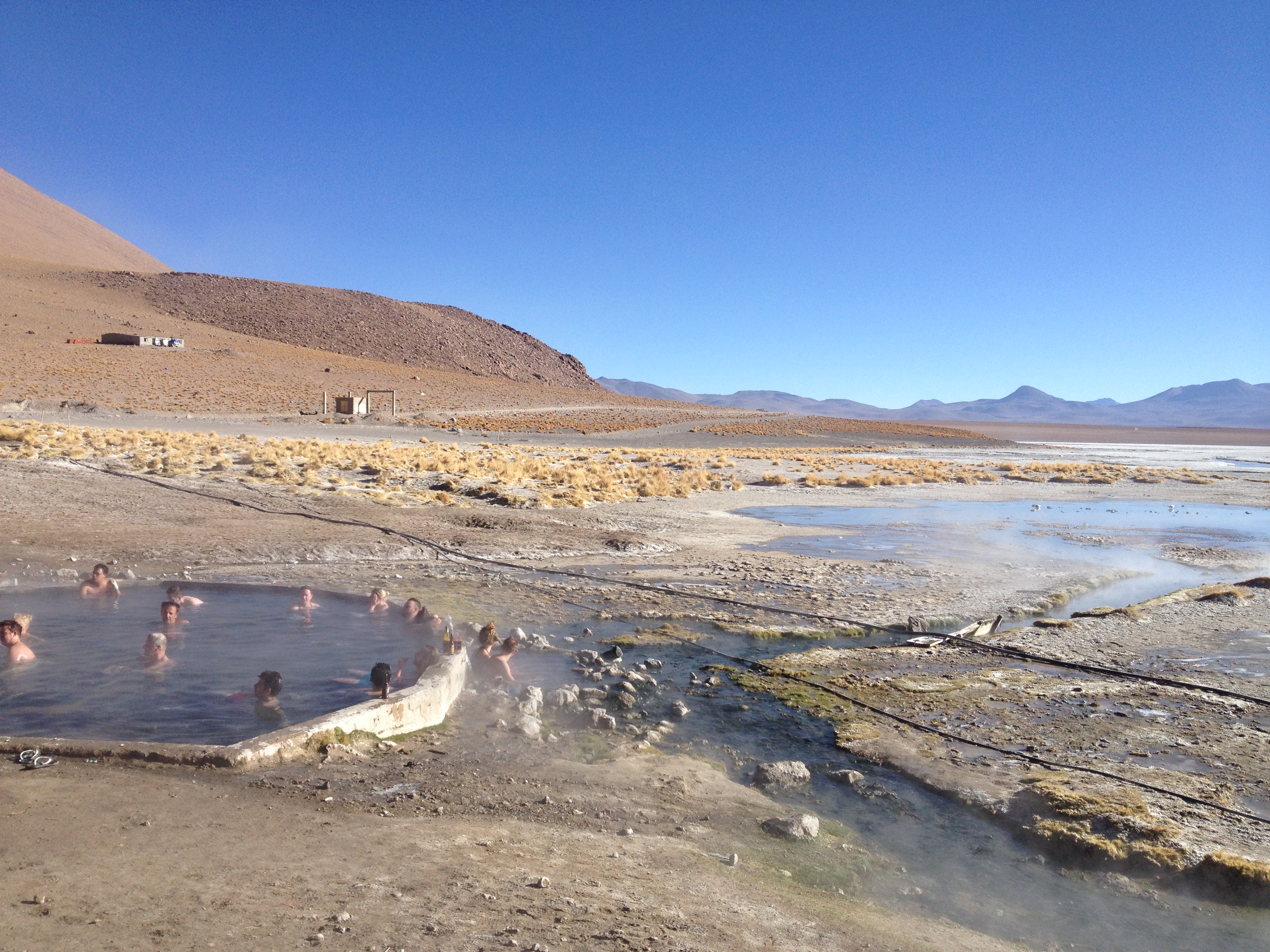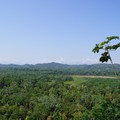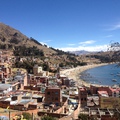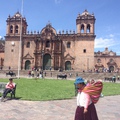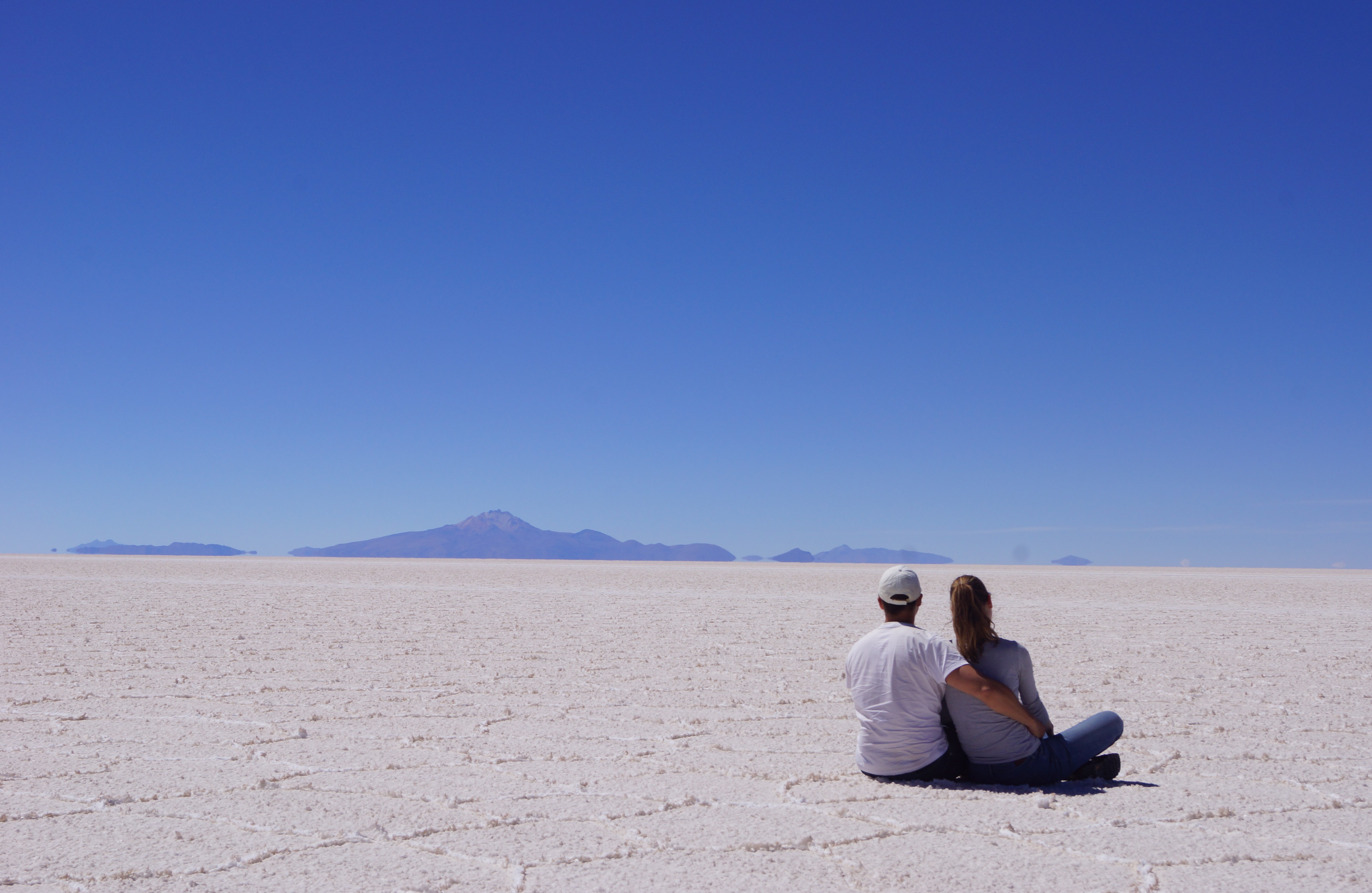 Salar de Uyuni, the world's largest salt flat is located in southwest Bolivia and can be visited either from Bolivia or from Chile. The most ideal way to see this fascinating landscape is through a three-day tour, where you besides the salt flat also visit the Eduardo Avaroa National Reserve plus you cross the border between Bolivia and Chile. You can either - as we did - start in Uyuni and finish in San Pedro de Atacama, or do it the other way around.
Salar de Uyuni, the world's largest salt flat is located in southwest Bolivia and can be visited either from Bolivia or from Chile. The most ideal way to see this fascinating landscape is through a three-day tour, where you besides the salt flat also visit the Eduardo Avaroa National Reserve plus you cross the border between Bolivia and Chile. You can either - as we did - start in Uyuni and finish in San Pedro de Atacama, or do it the other way around.
Salar de Uyuni is unlike any other place on earth; it is part of the Bolivian Altiplano and as such lies at 3656m above sea level, while it features vast expanses of glistering white salt. The landscape is entirely flat with a few "islands" that have vegetation, which only accentuates its surreal beauty. This landscape is so amazing, that I could not stop taking pictures of it.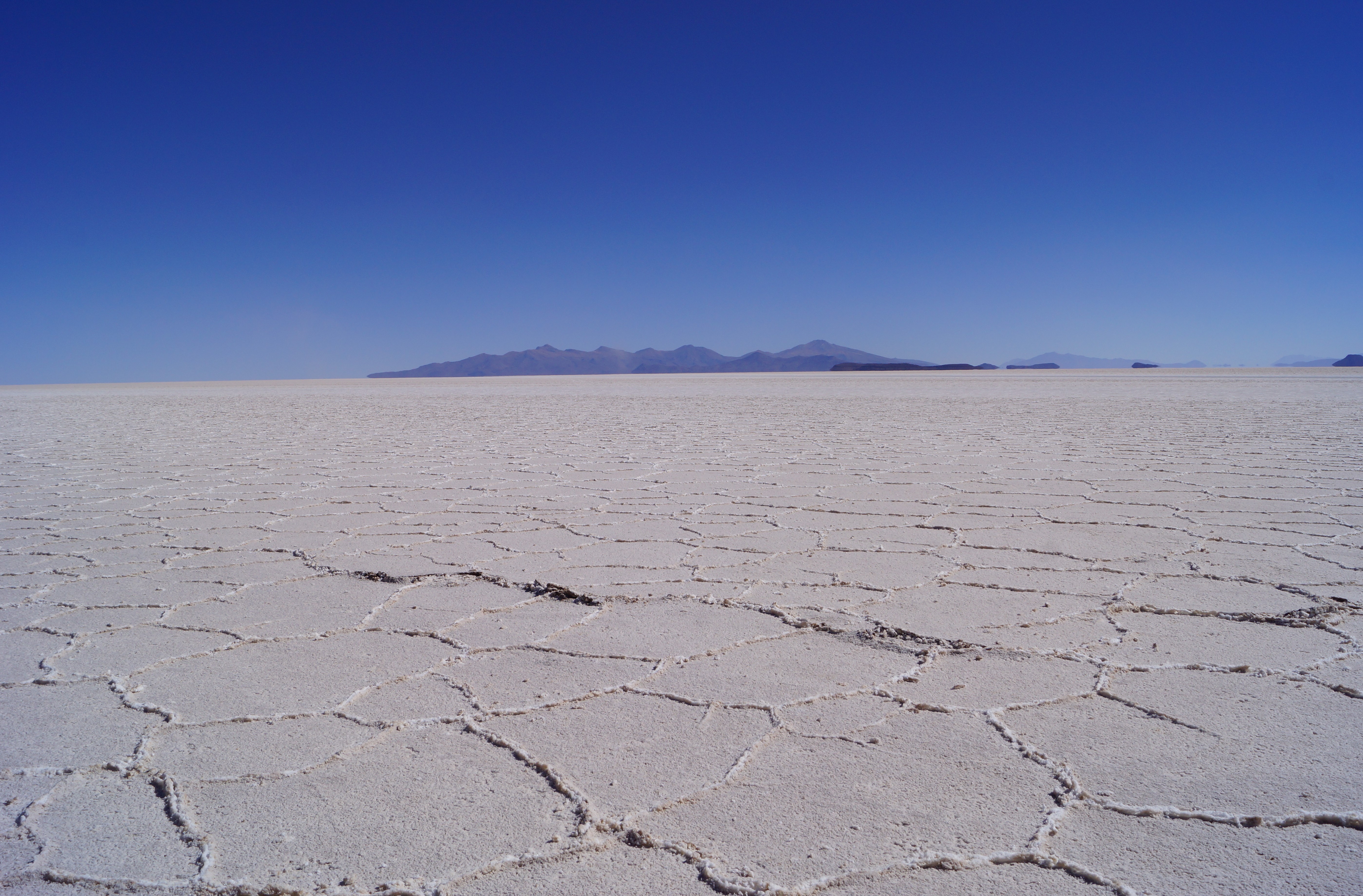

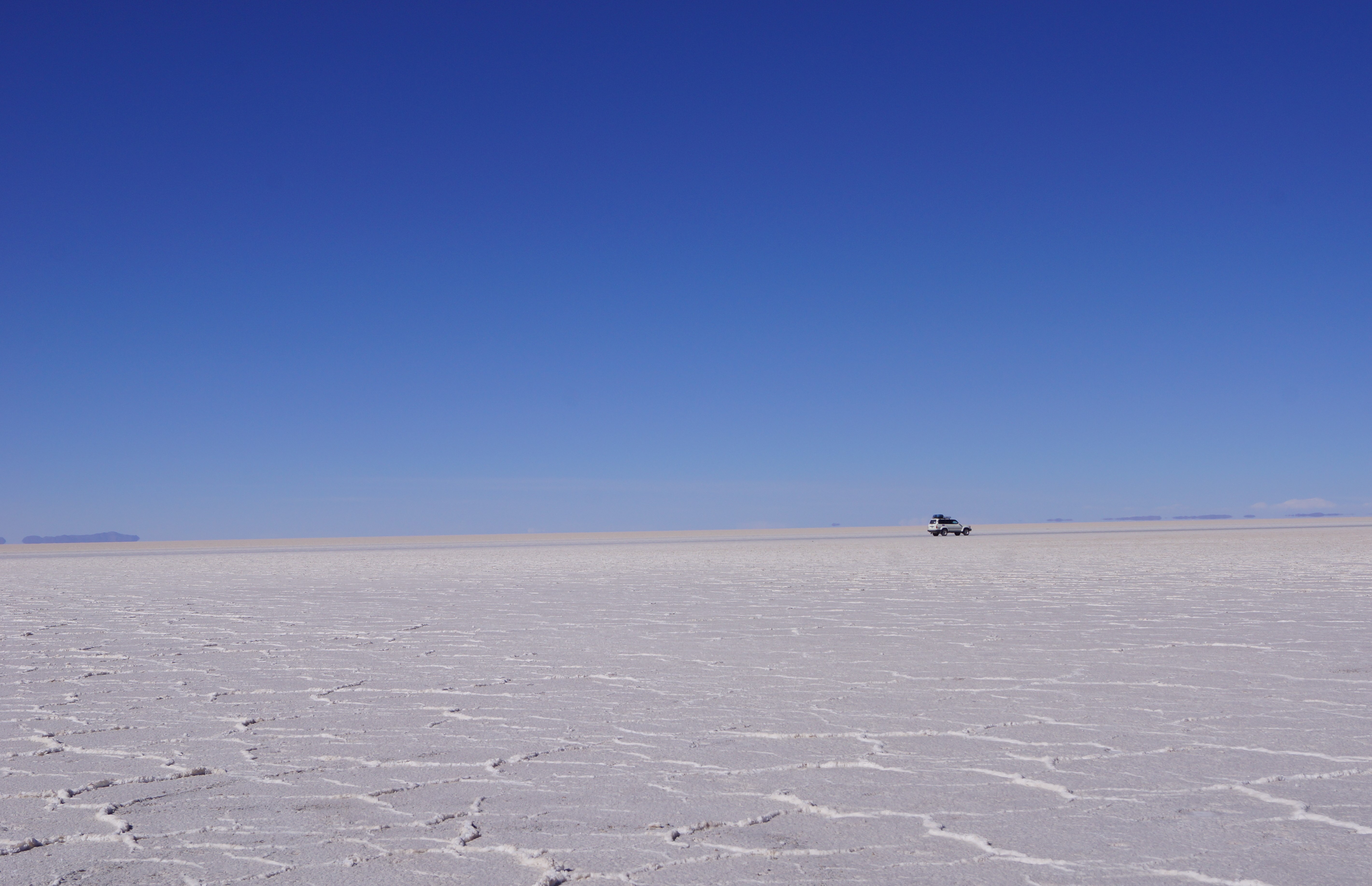 Another great thing about Salar de Uyuni is that you can do it on a budget. You just take a bus from La Paz to a town called Uyuni and book a three-day tour in Spanish when you arrive. There is a travel agency literally on every corner in Uyuni, which keeps the prices low, and if you can manage without an English guide, you can take a three-day tour for 100$. The same tour in English costs double as much, so it was a no brainer for us, that we book the tour in Spanish.
Another great thing about Salar de Uyuni is that you can do it on a budget. You just take a bus from La Paz to a town called Uyuni and book a three-day tour in Spanish when you arrive. There is a travel agency literally on every corner in Uyuni, which keeps the prices low, and if you can manage without an English guide, you can take a three-day tour for 100$. The same tour in English costs double as much, so it was a no brainer for us, that we book the tour in Spanish.
Salar de Uyuni is a harsh terrain, therefore, each tour goes with a 4x4 Land Rover and has only 6 passengers. In our group there were 4 women plus Kasper and me. It may sound good - "a rooster in a hen house" - but OMG these women were discussing every little thing; there was yap, yap, yap, yappity yap in Spanish all the time. Kasper was incredibly happy that he did not understand much Spanish and could just stone while looking out of the car window. 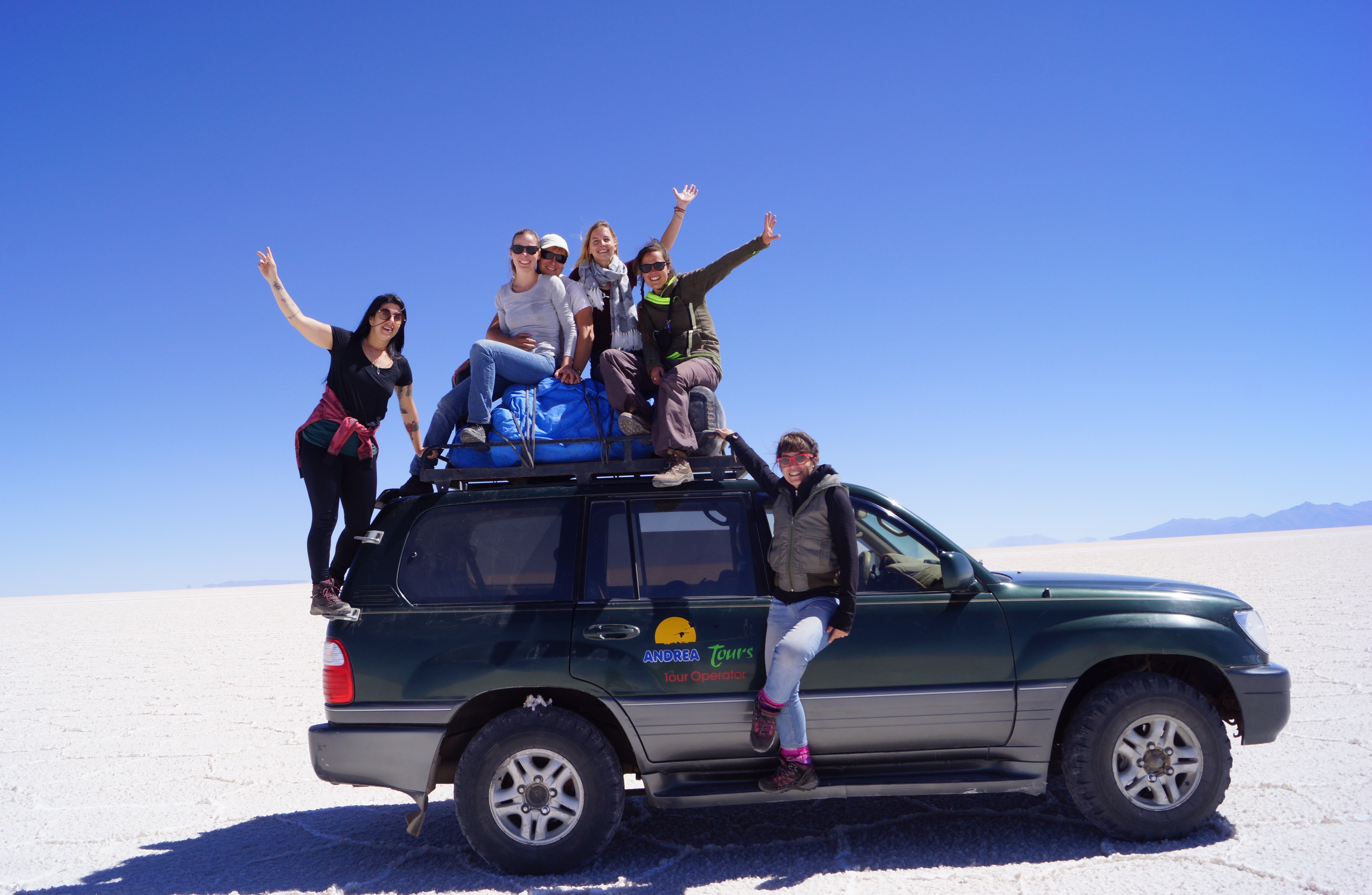 Here is the itinerary of our three-day tour in Salar de Uyuni.
Here is the itinerary of our three-day tour in Salar de Uyuni.
Day 1
On the first day we started at the train cemetery which is only a couple of kilometer away from Uyuni.
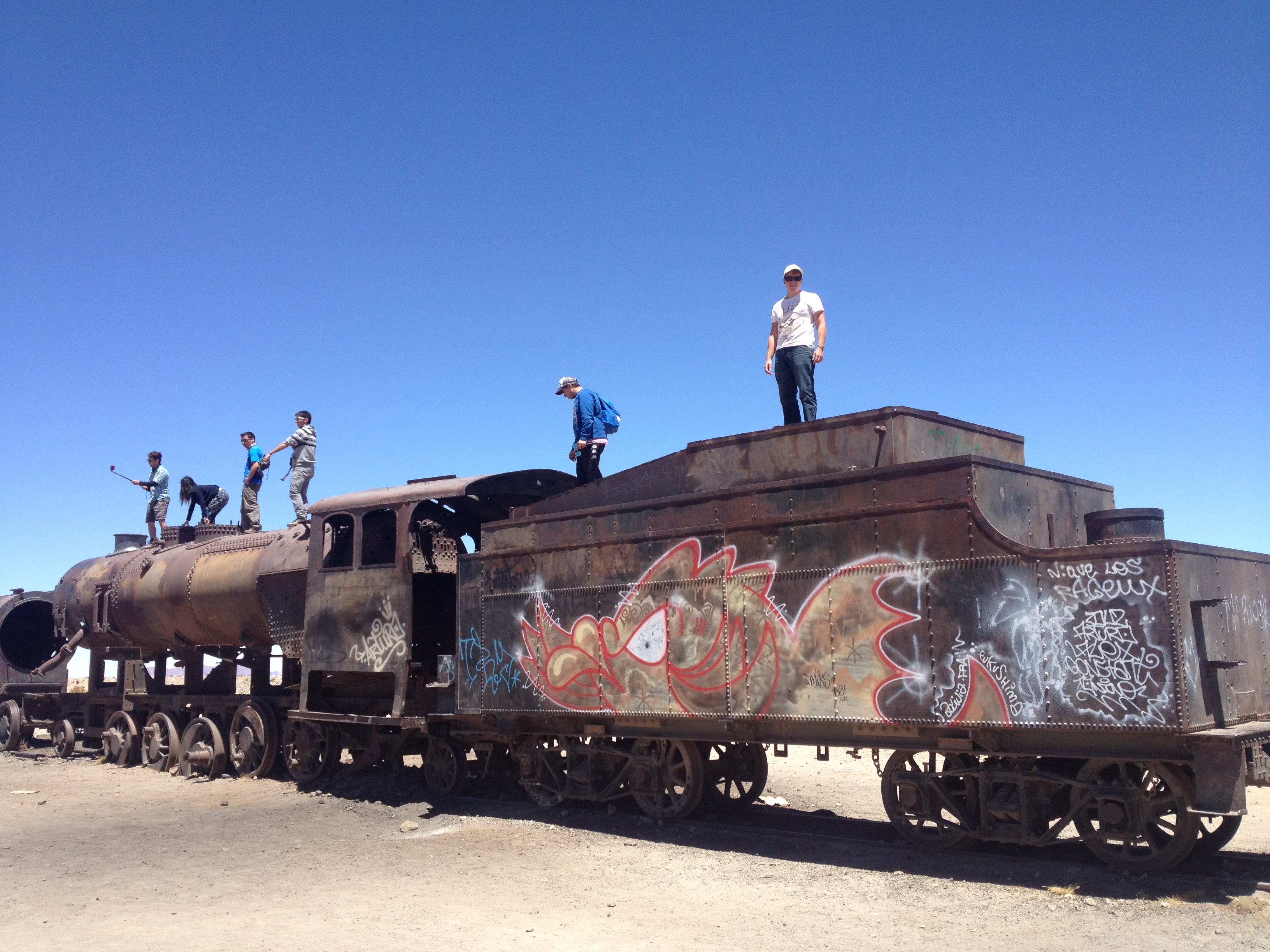
Colchani is just a typical tourist trap town; there is nothing to see, just shopping, shopping and some more shopping.
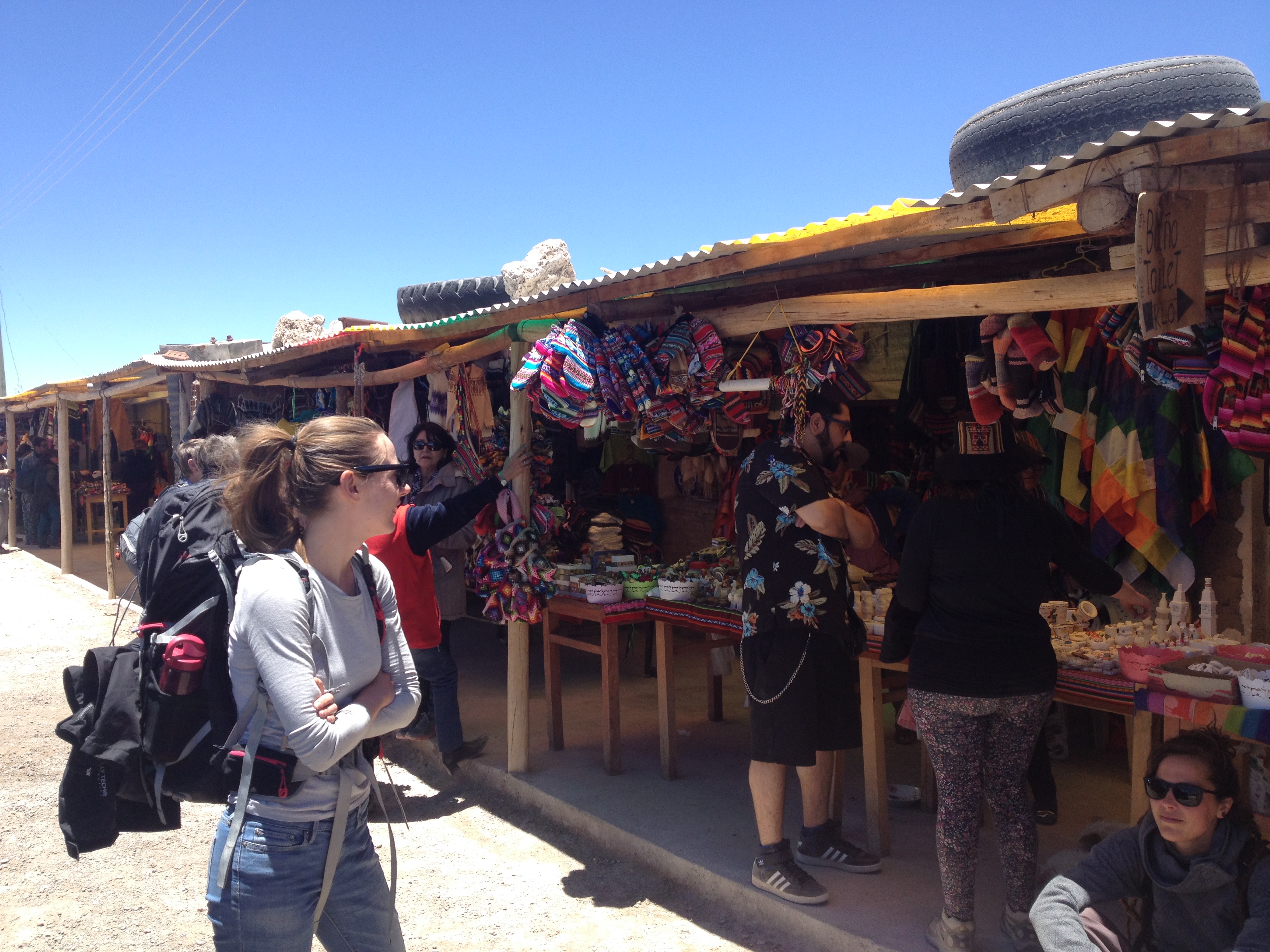
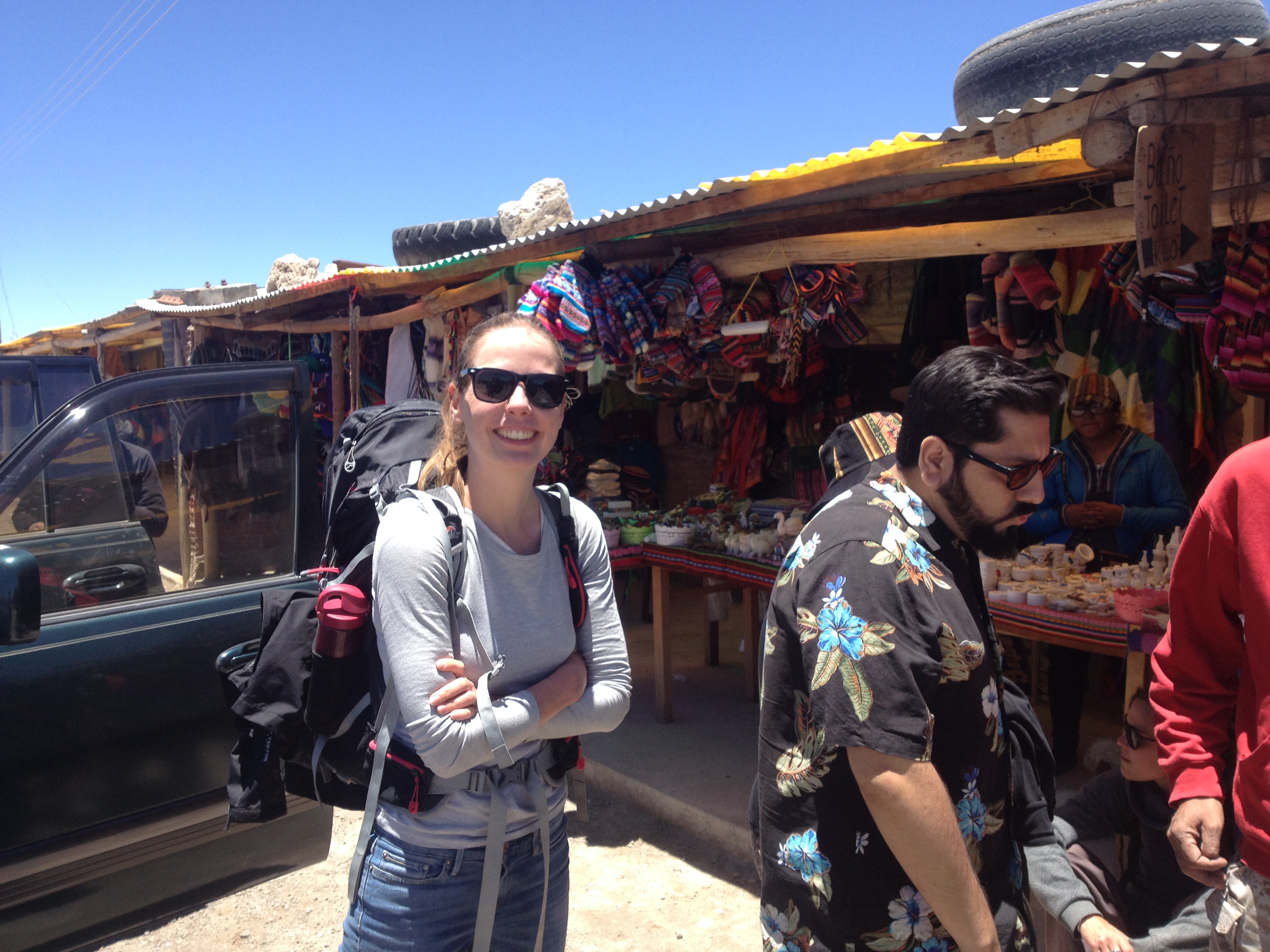
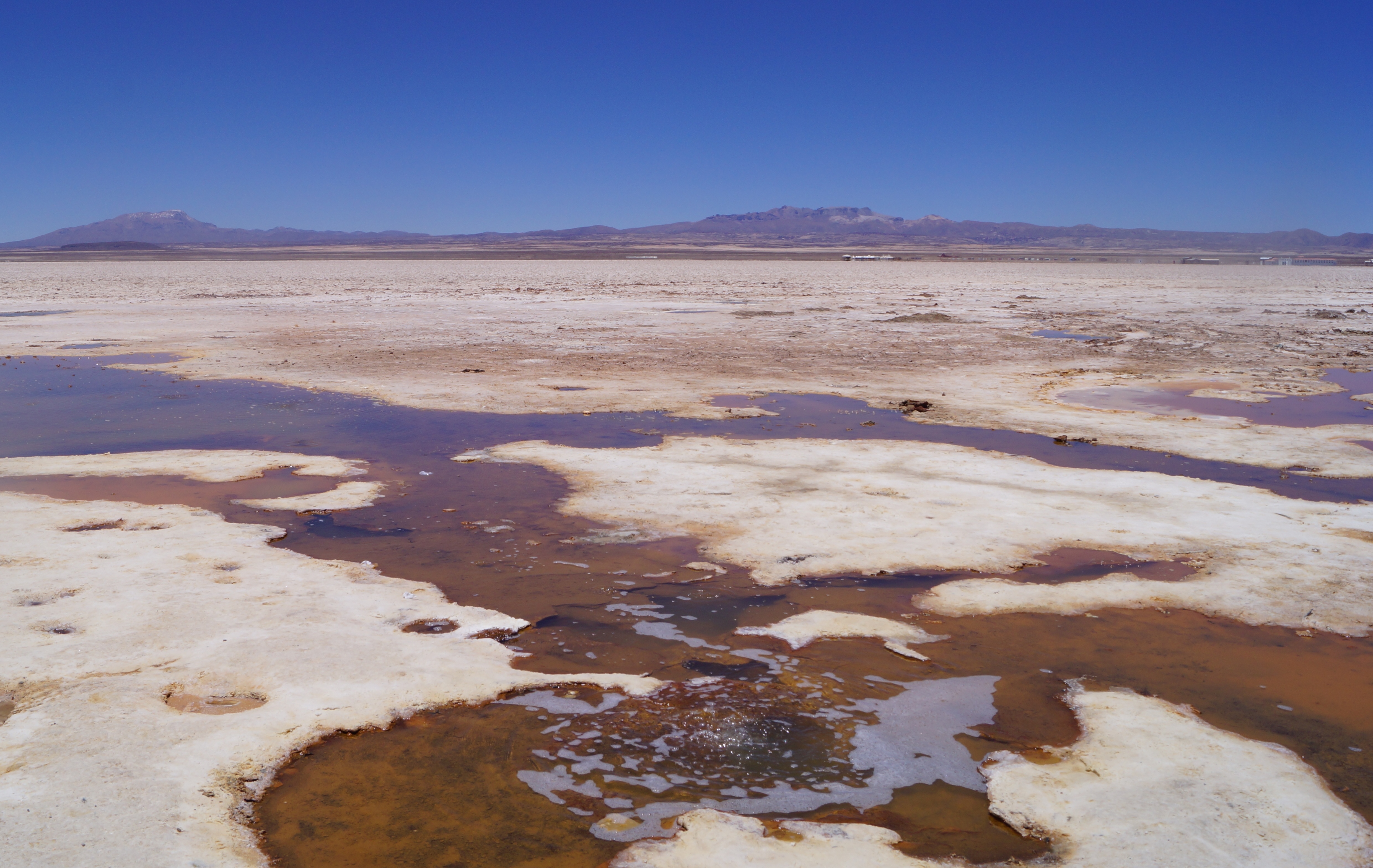
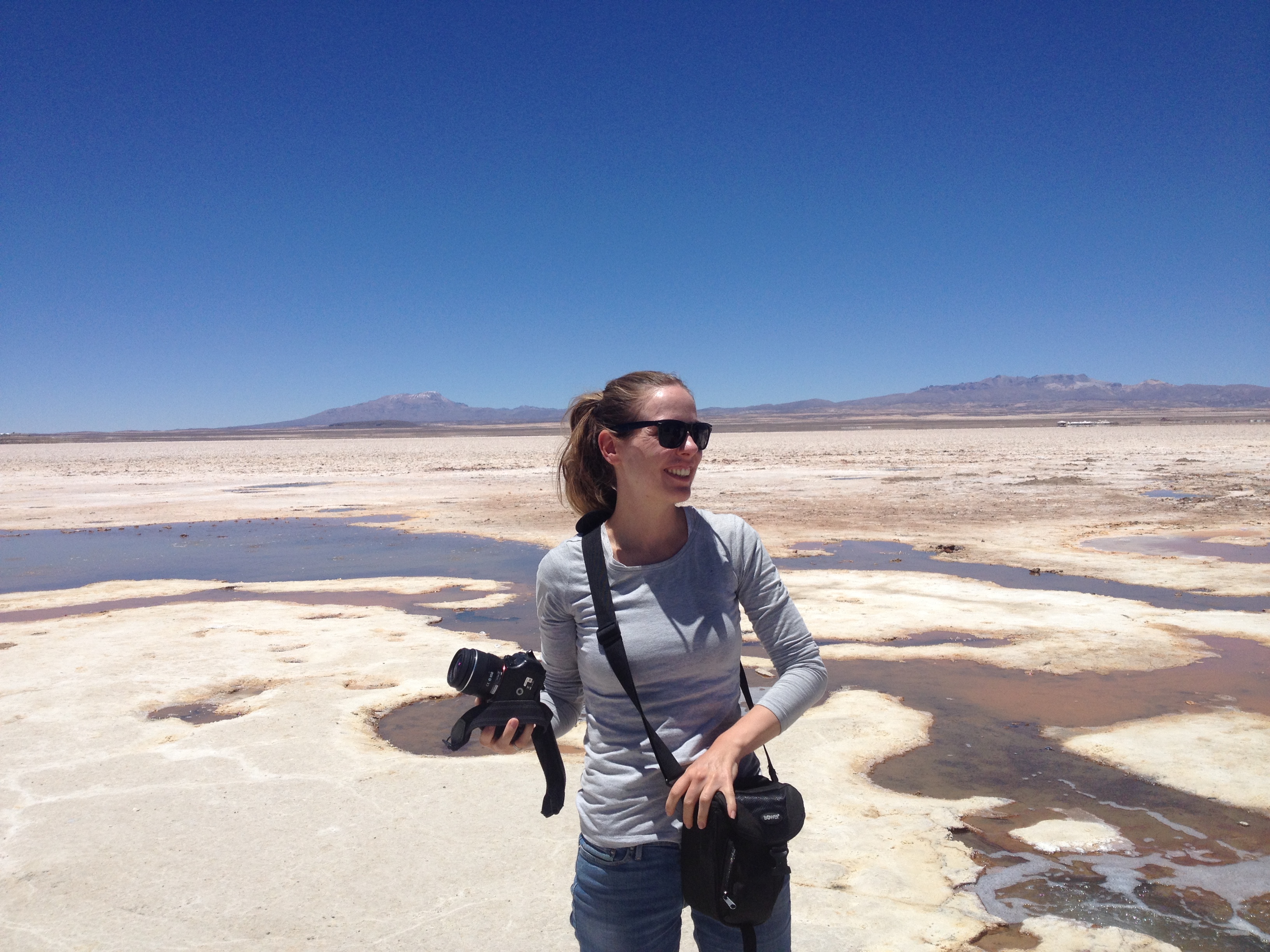
Now the hotel functions as a place where tour groups eat their packed lunch; it is basically a picnic area.
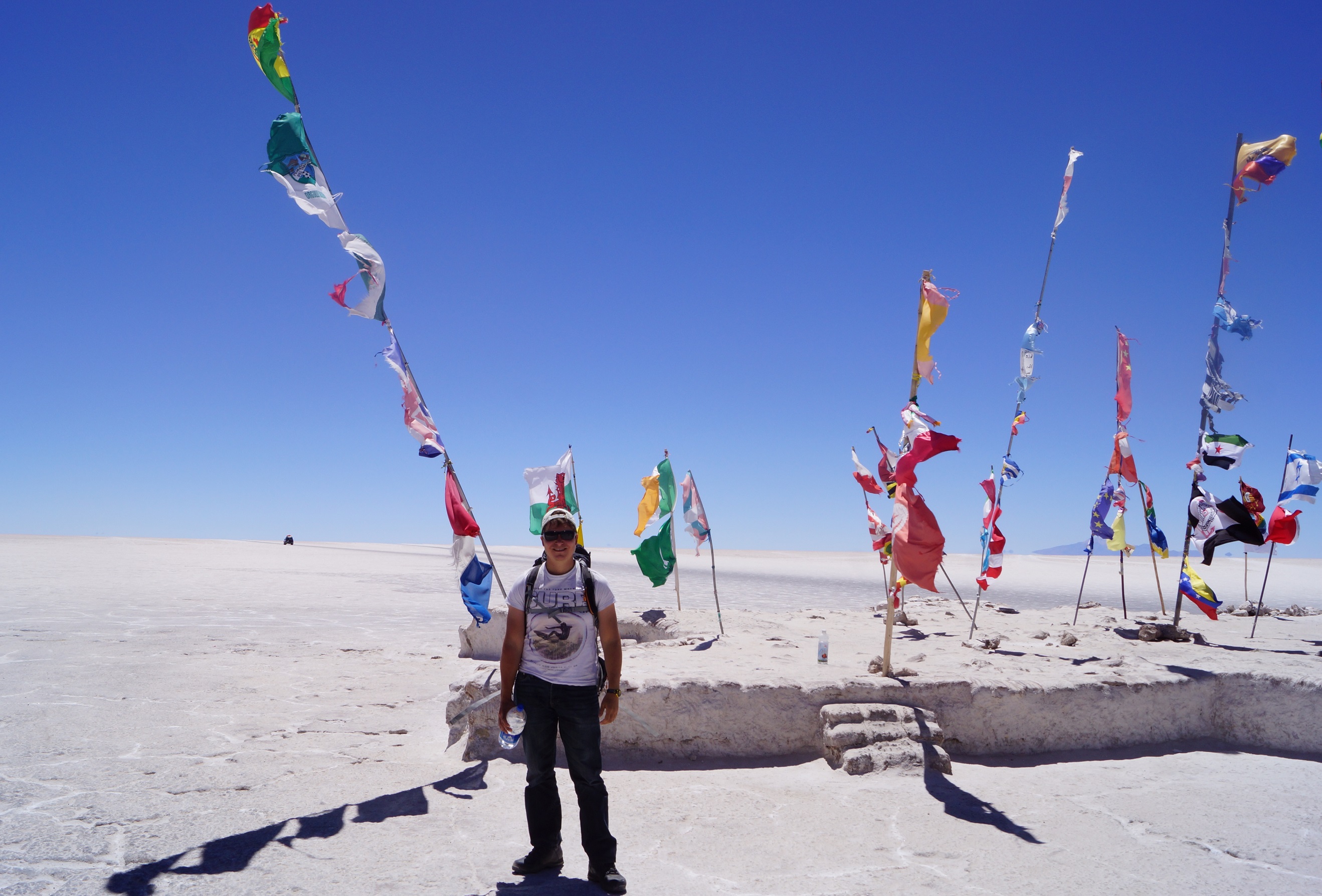 After lunch we drove to a nice area, where the salt crusts were untouched and we could be completely alone, away from the crowds.
After lunch we drove to a nice area, where the salt crusts were untouched and we could be completely alone, away from the crowds.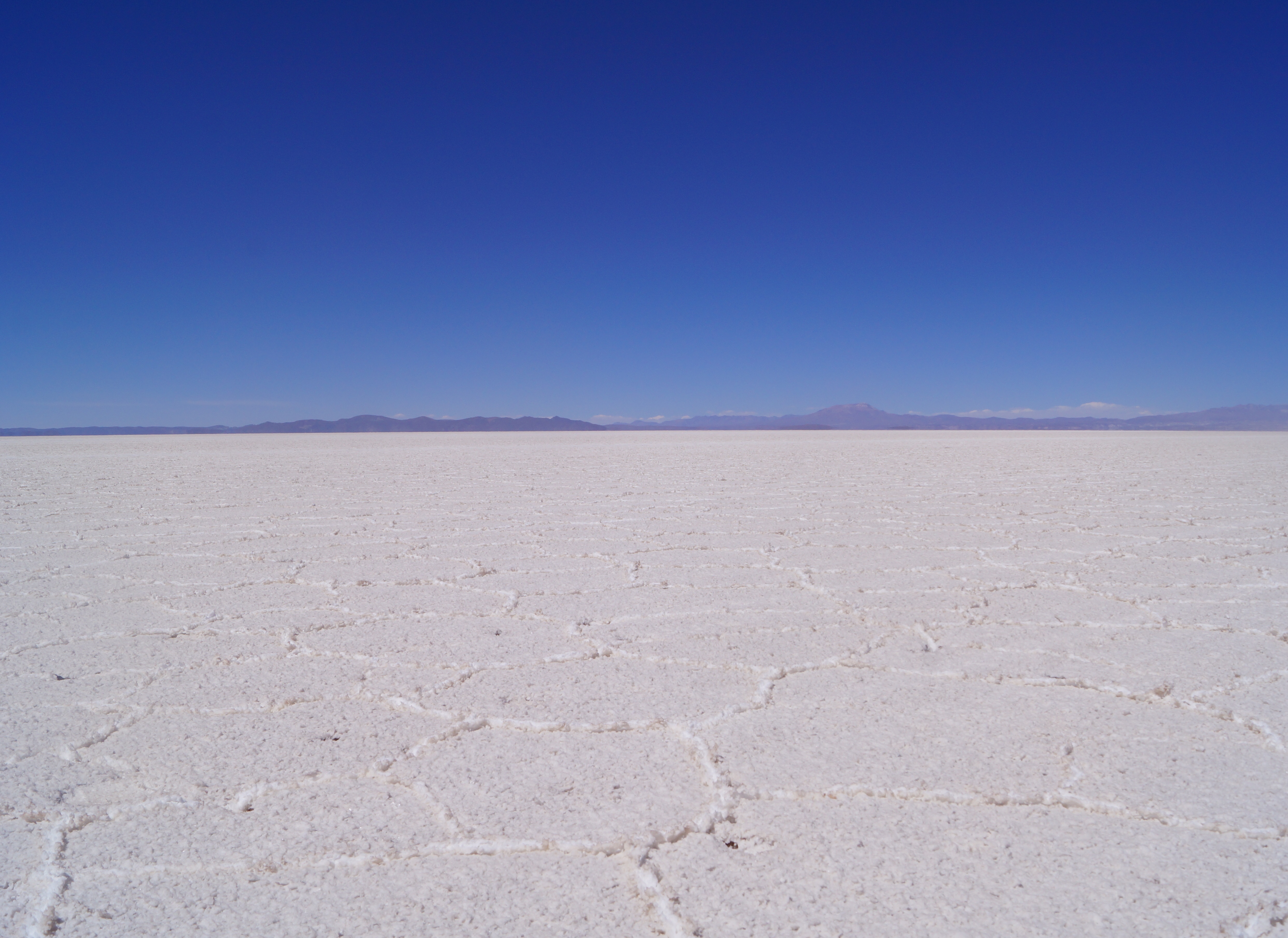 Then we got down to business; we took some silly photos of each other on the salt flats. Yes, I know, it is a very touristy thing to do, but we just had to do it just for the heck of it.
Then we got down to business; we took some silly photos of each other on the salt flats. Yes, I know, it is a very touristy thing to do, but we just had to do it just for the heck of it.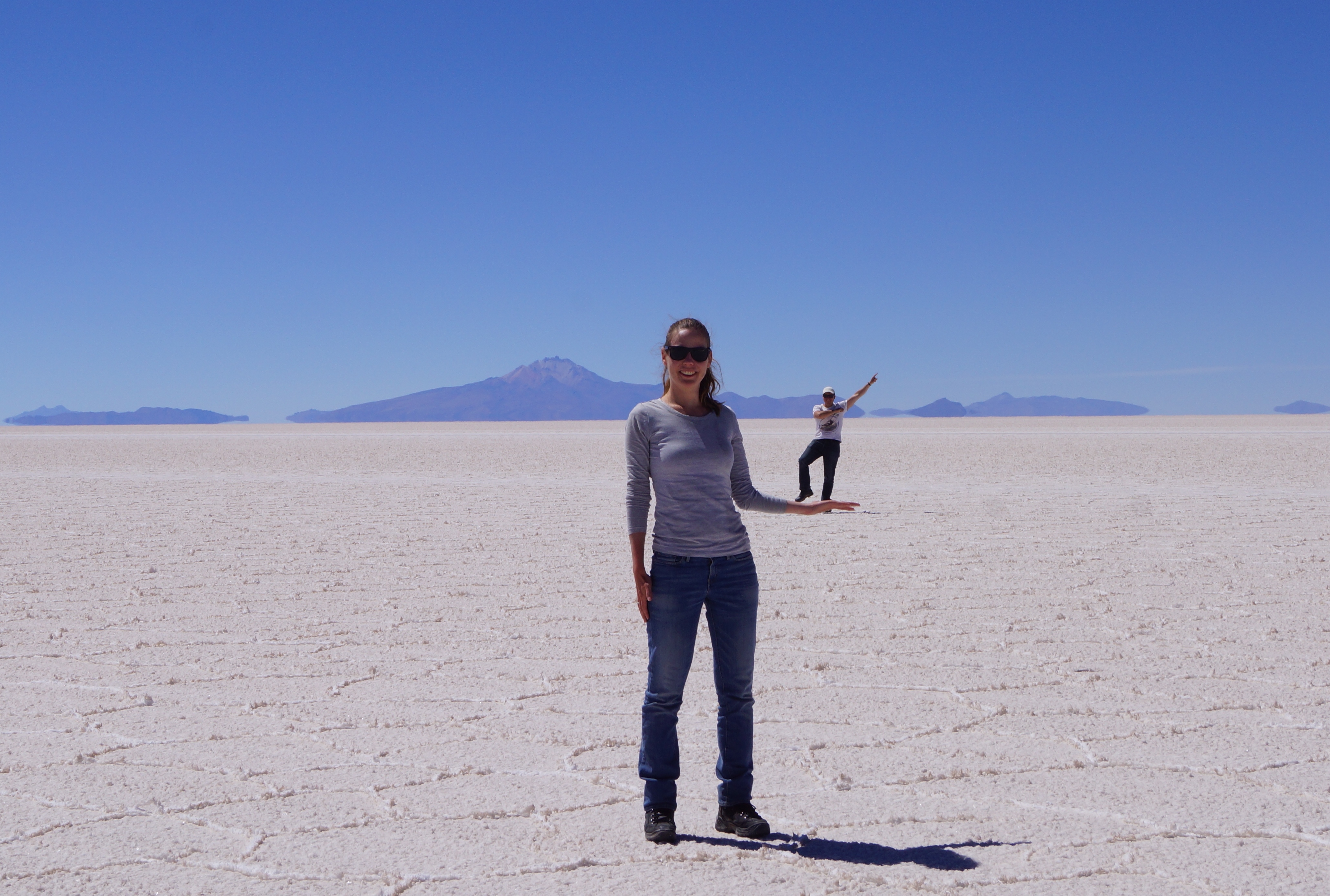
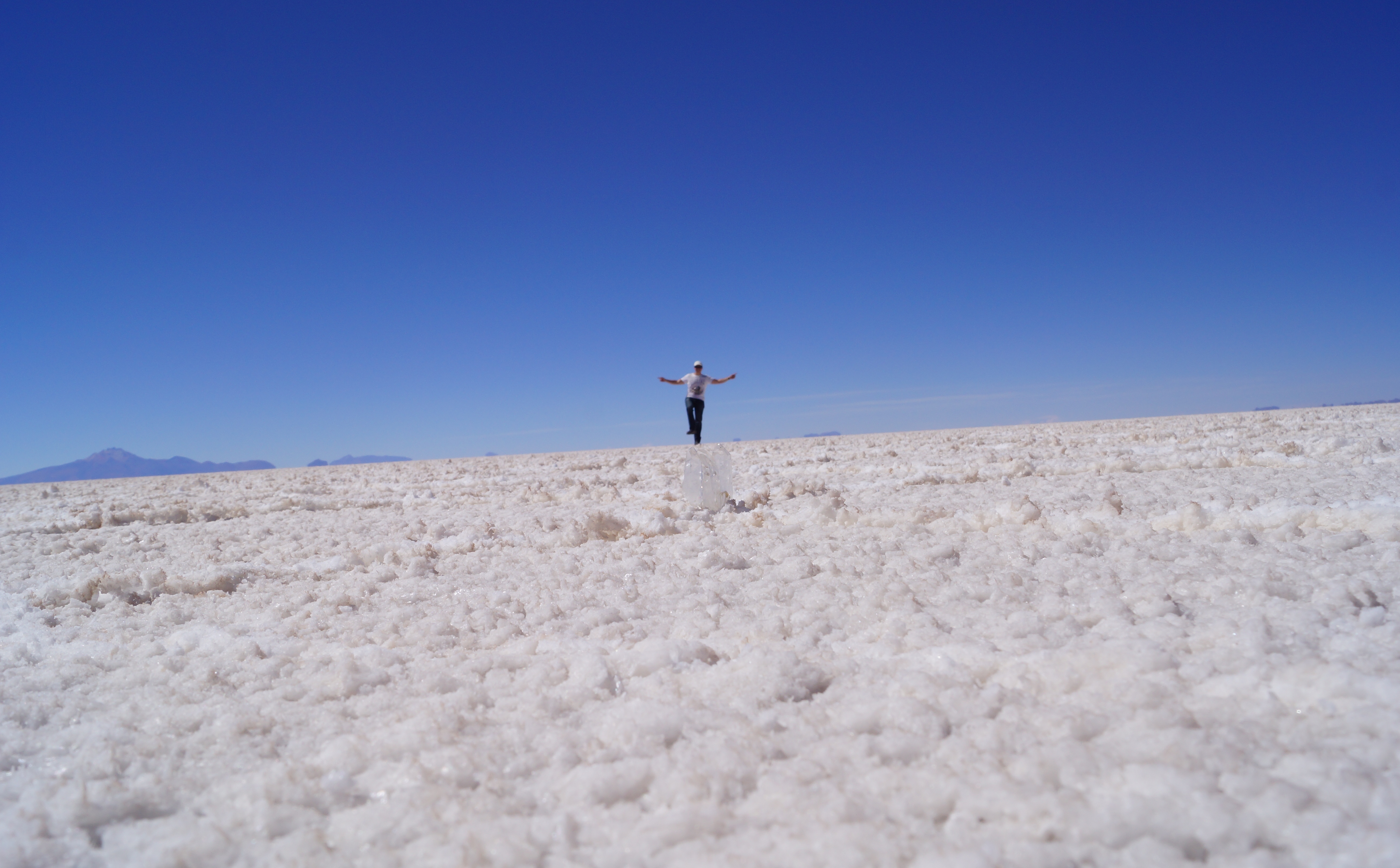
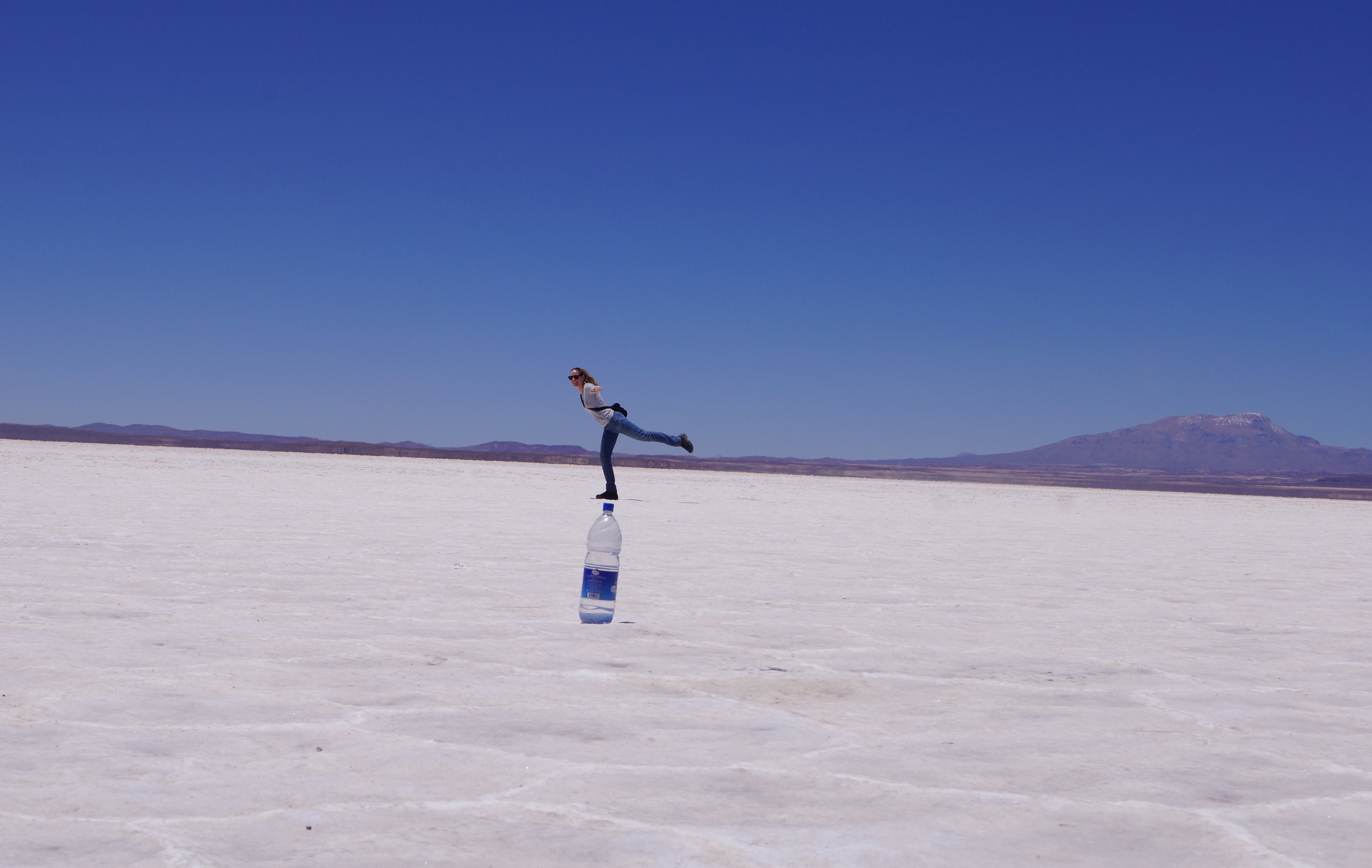
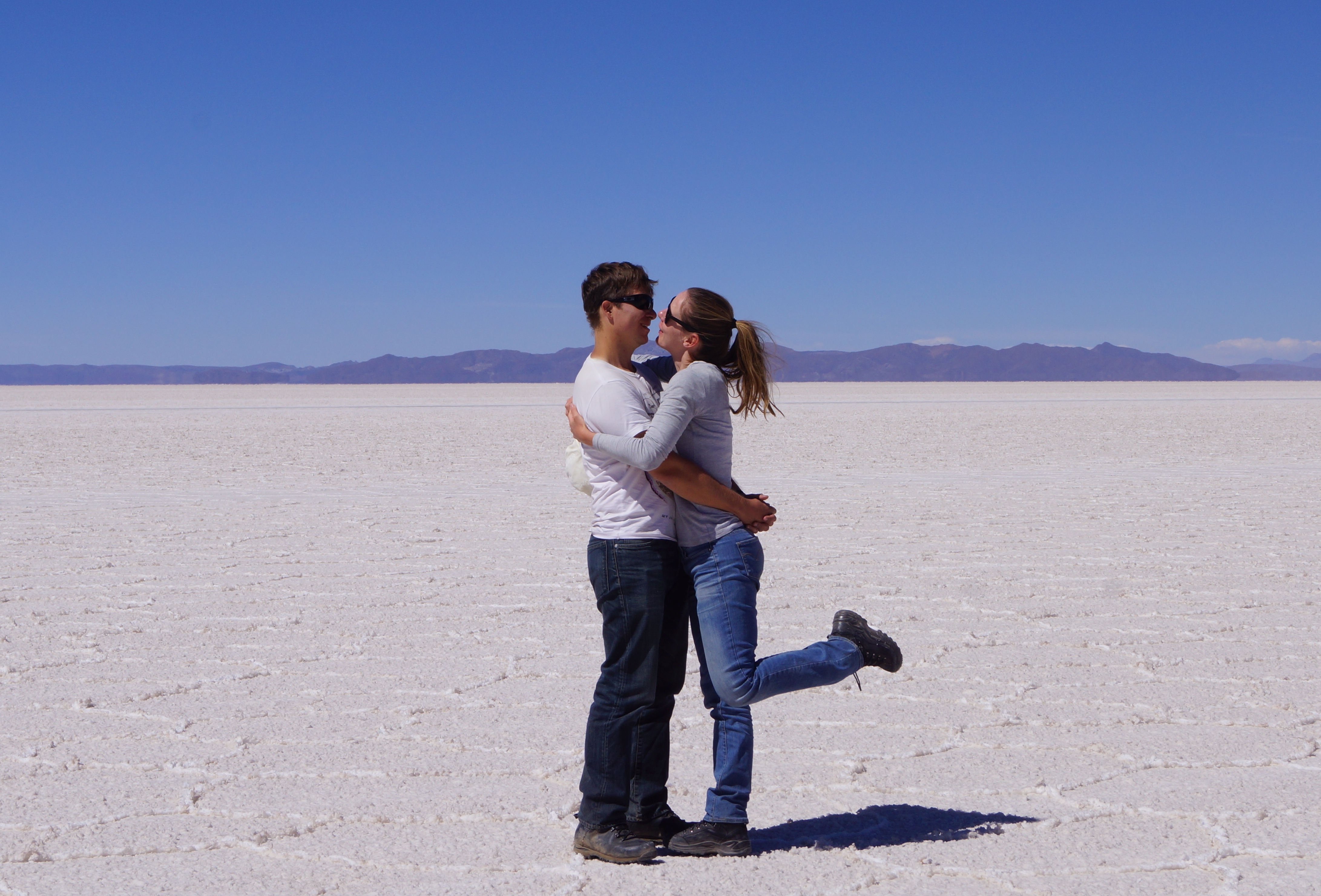 After the photos we moved on to Incahuasi Island, which is actually a hill with some giant cacti in the middle of the salt flats. I have read that it is a top of an ancient volcano, quite neat, isn't it?
After the photos we moved on to Incahuasi Island, which is actually a hill with some giant cacti in the middle of the salt flats. I have read that it is a top of an ancient volcano, quite neat, isn't it?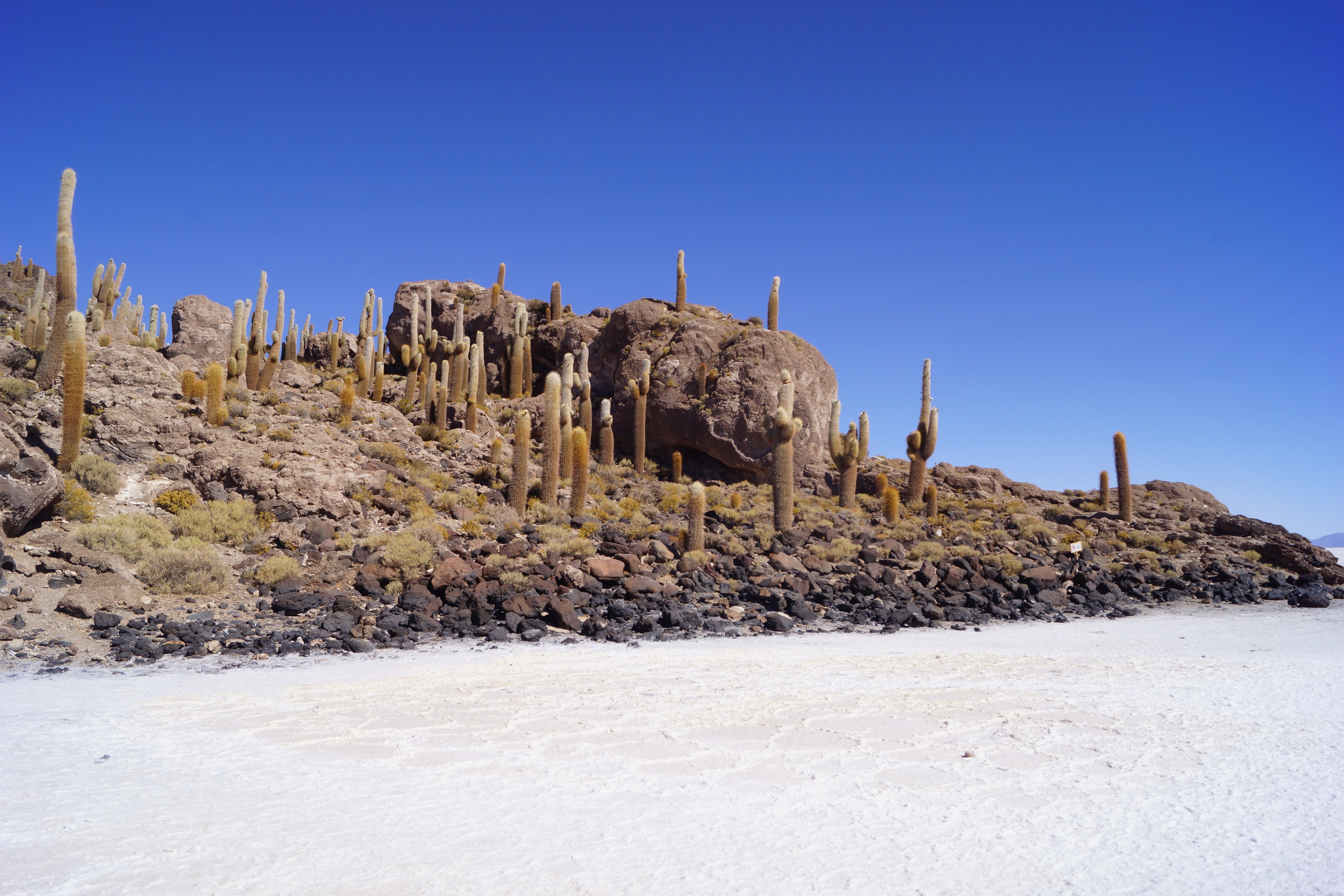 At Incahuasi Island we met Latino Dennis again; he was proudly walking around there in his newly purchased poncho. Wow, Latino Dennis, you now look like a million dollars!
At Incahuasi Island we met Latino Dennis again; he was proudly walking around there in his newly purchased poncho. Wow, Latino Dennis, you now look like a million dollars!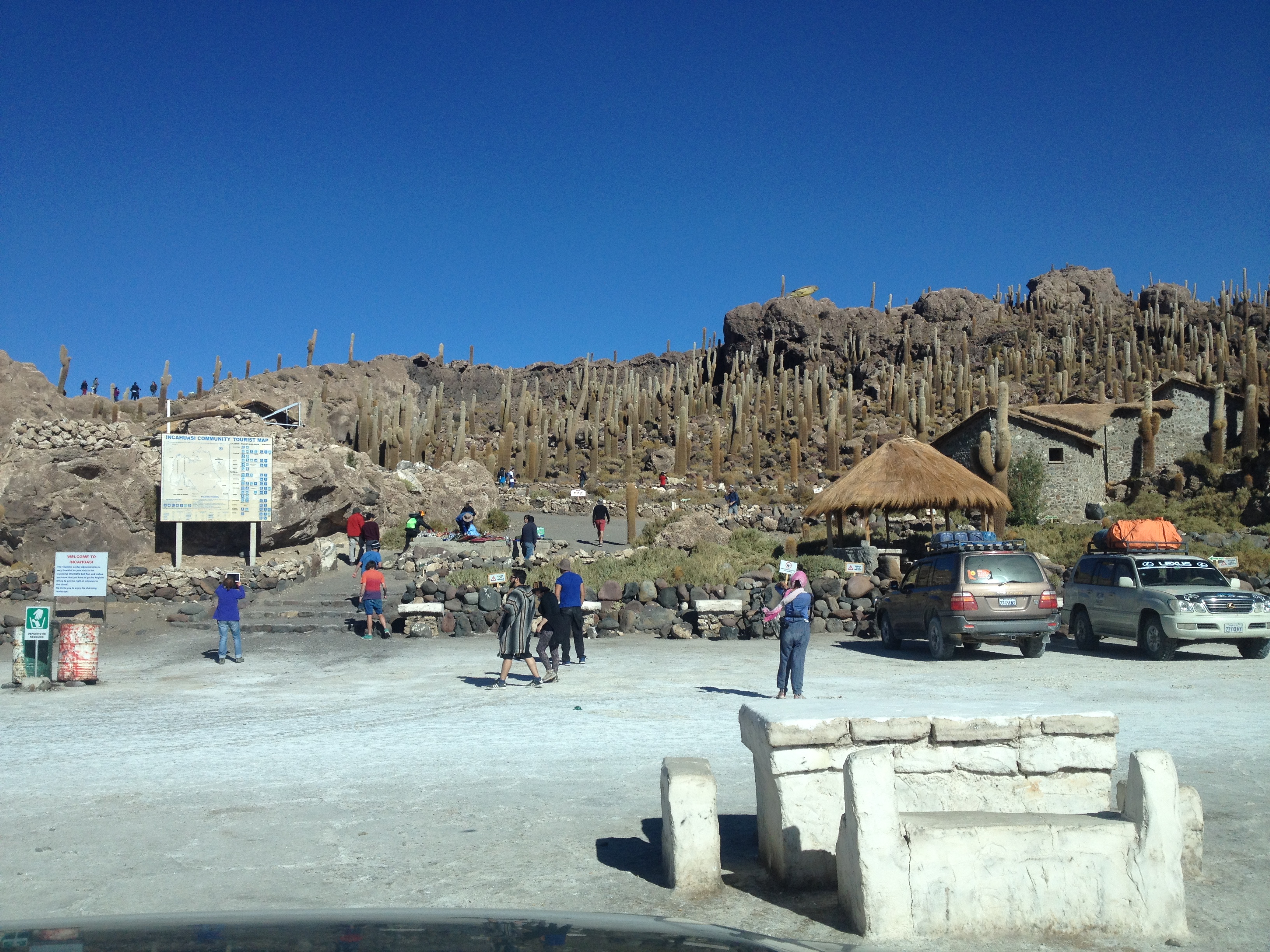
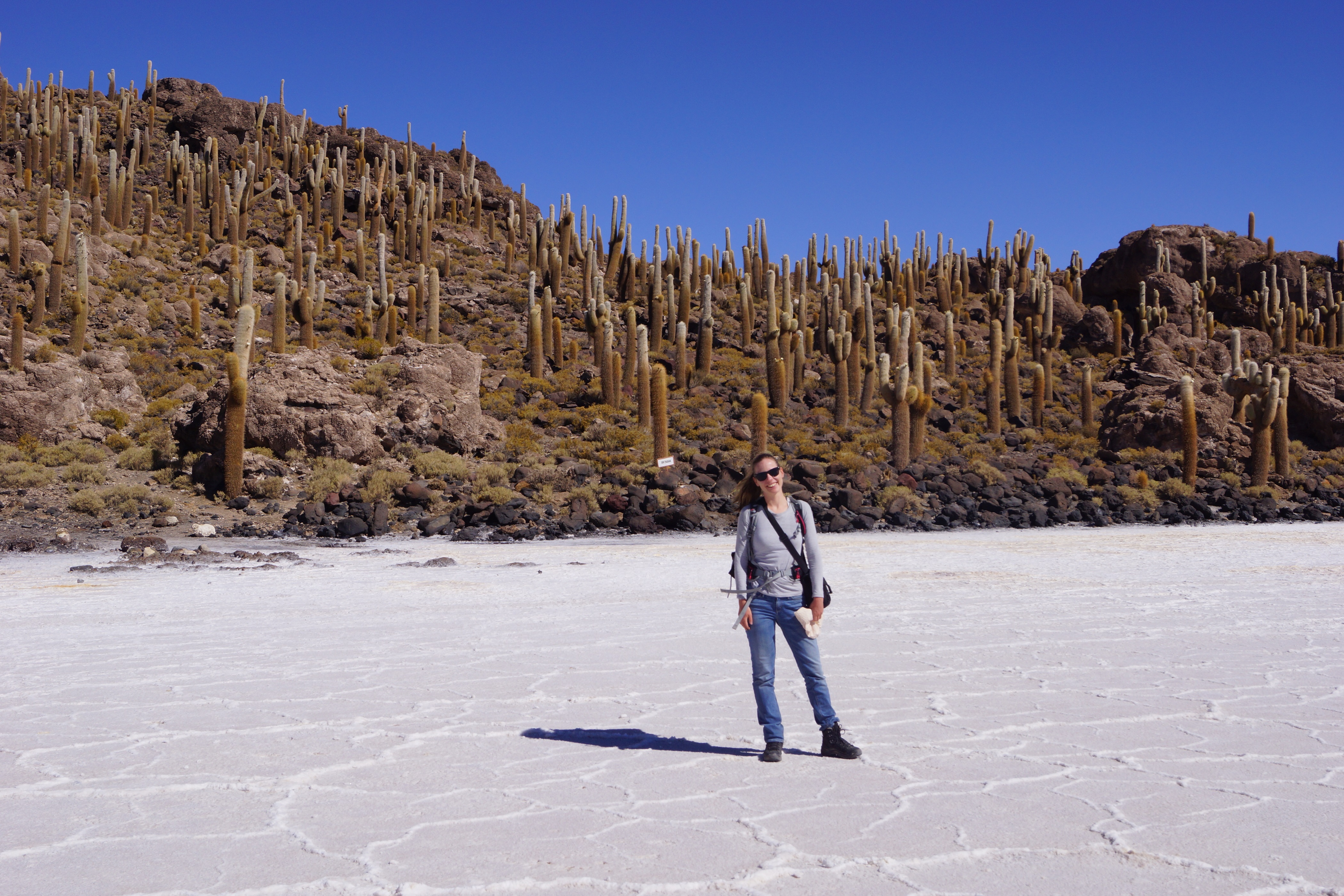

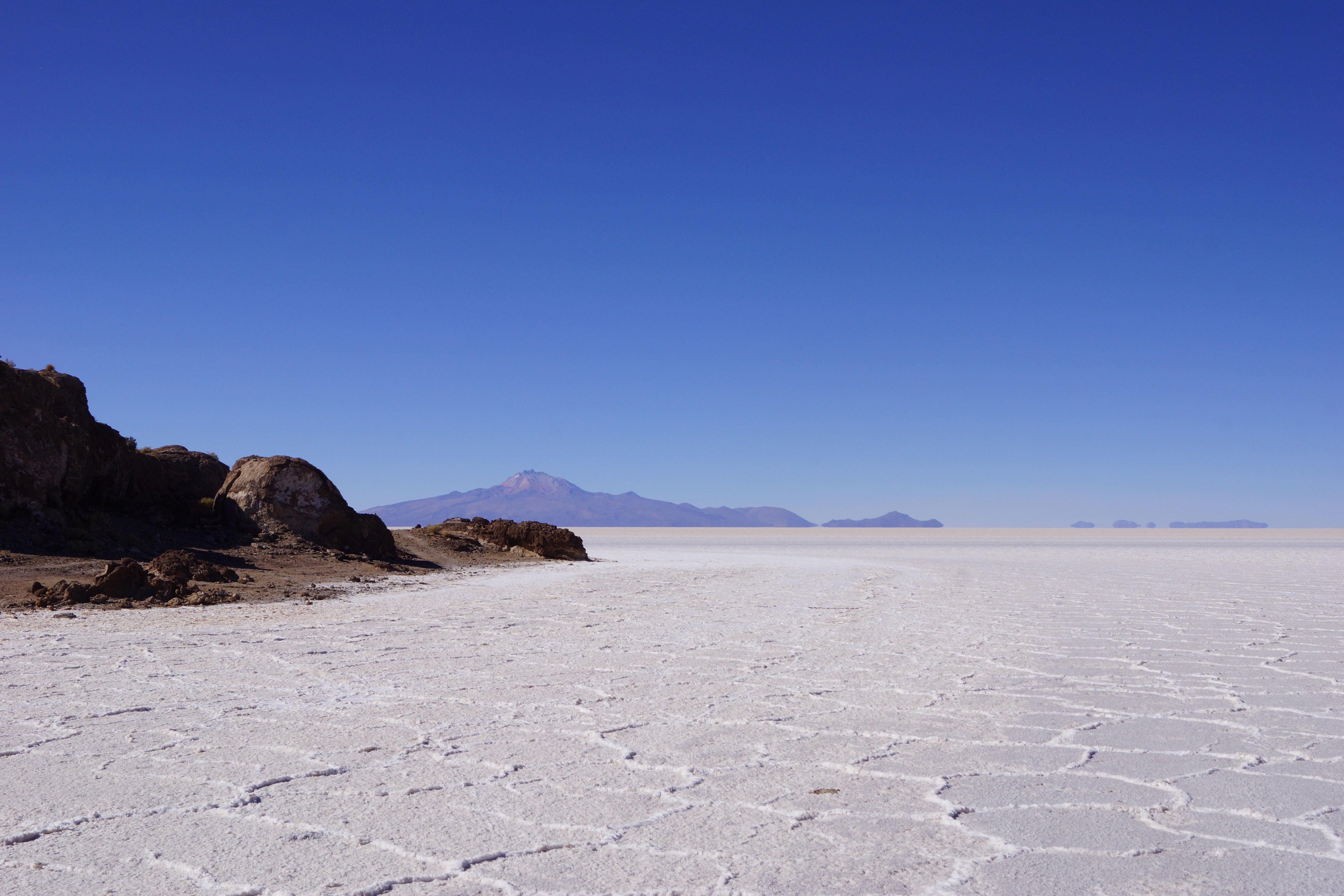 After the walk it was time to get to our accommodation in a tiny village called San Juan. But before making our way to the hostel, we stopped by a place, where the salt was extracted; it was quite photogenic.
After the walk it was time to get to our accommodation in a tiny village called San Juan. But before making our way to the hostel, we stopped by a place, where the salt was extracted; it was quite photogenic.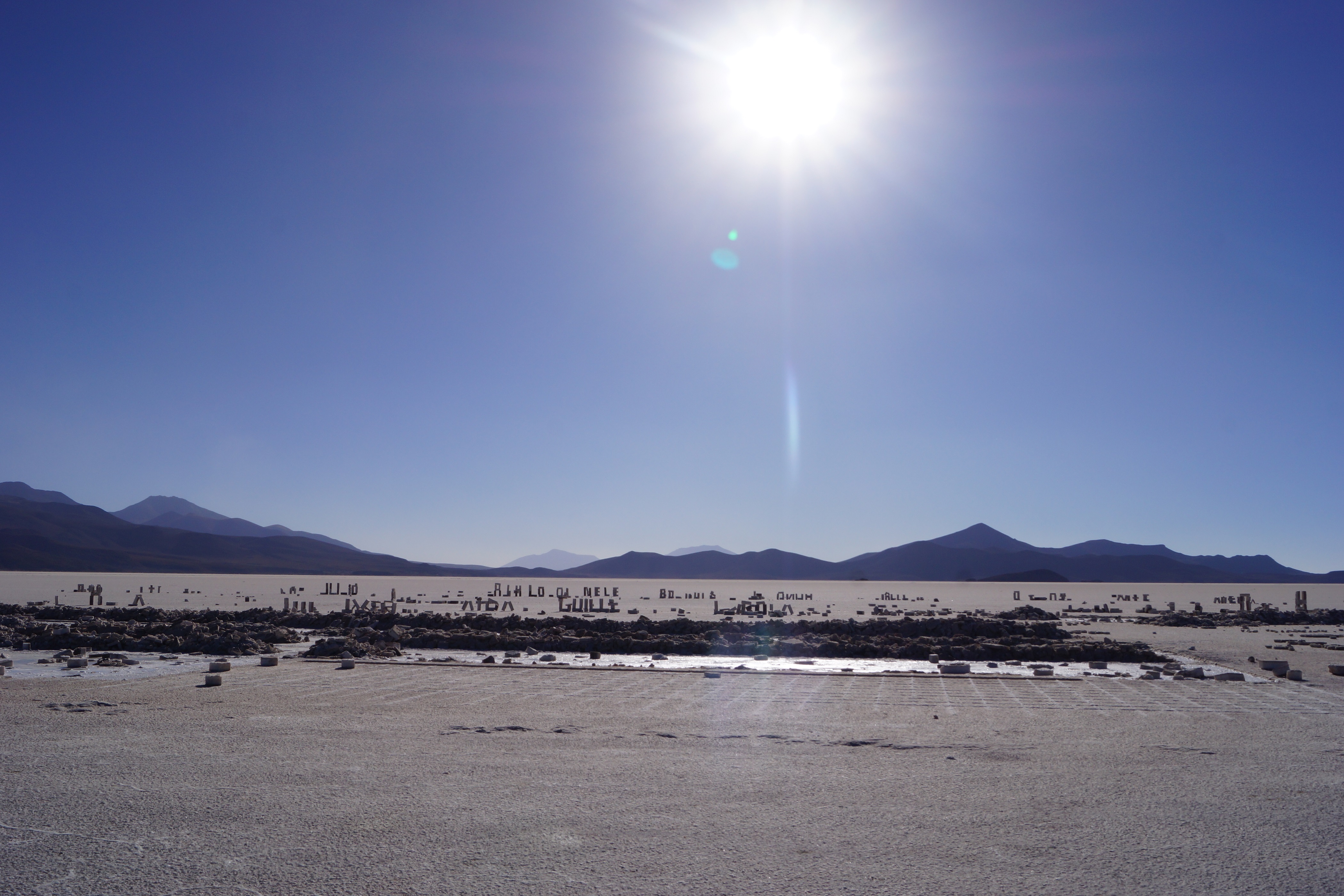 In San Juan we stayed in a salt hotel, which I think was more like a hostel with basic rooms and shared facilities. This was our room.
In San Juan we stayed in a salt hotel, which I think was more like a hostel with basic rooms and shared facilities. This was our room.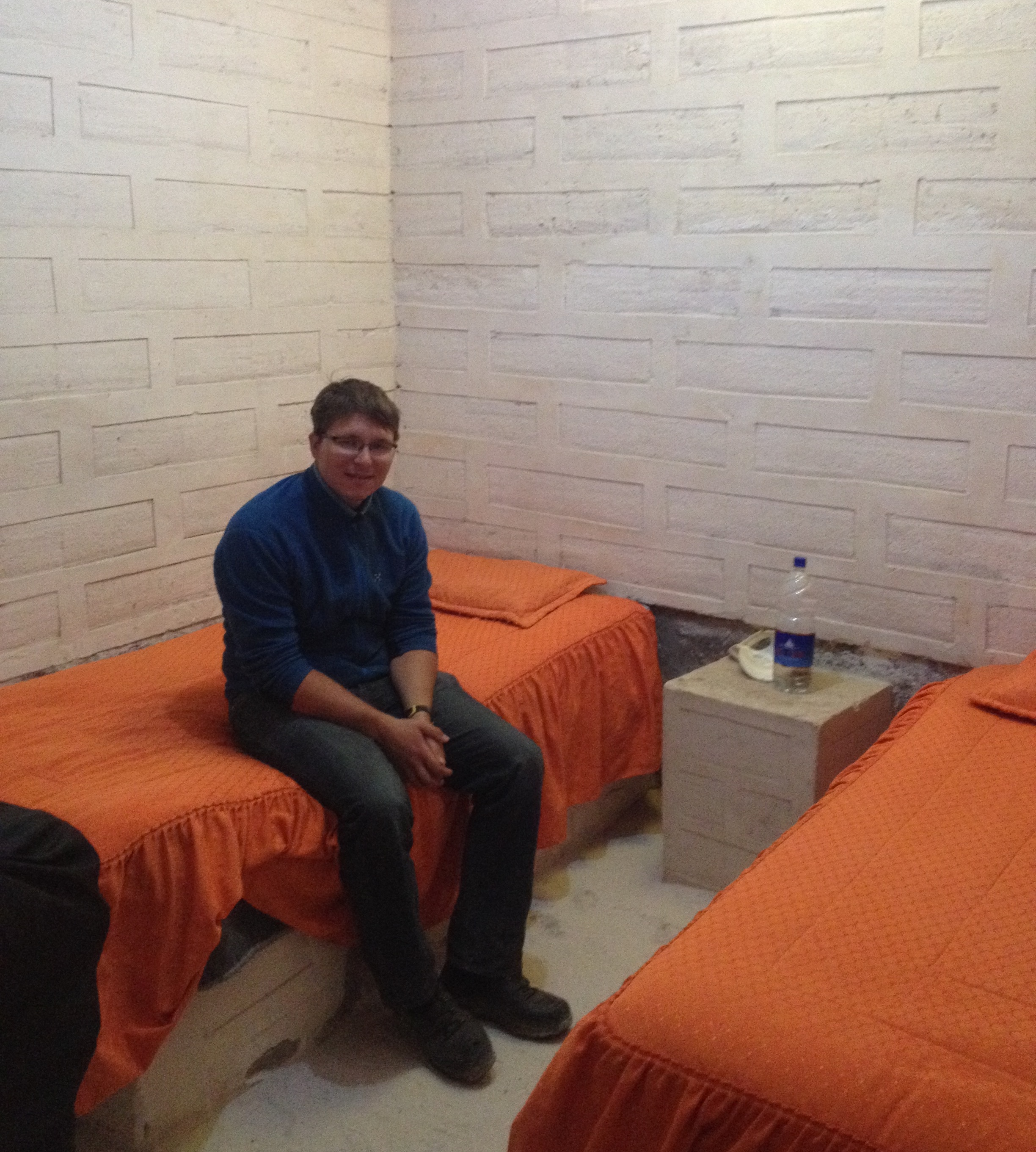 And this was the dining area.
And this was the dining area.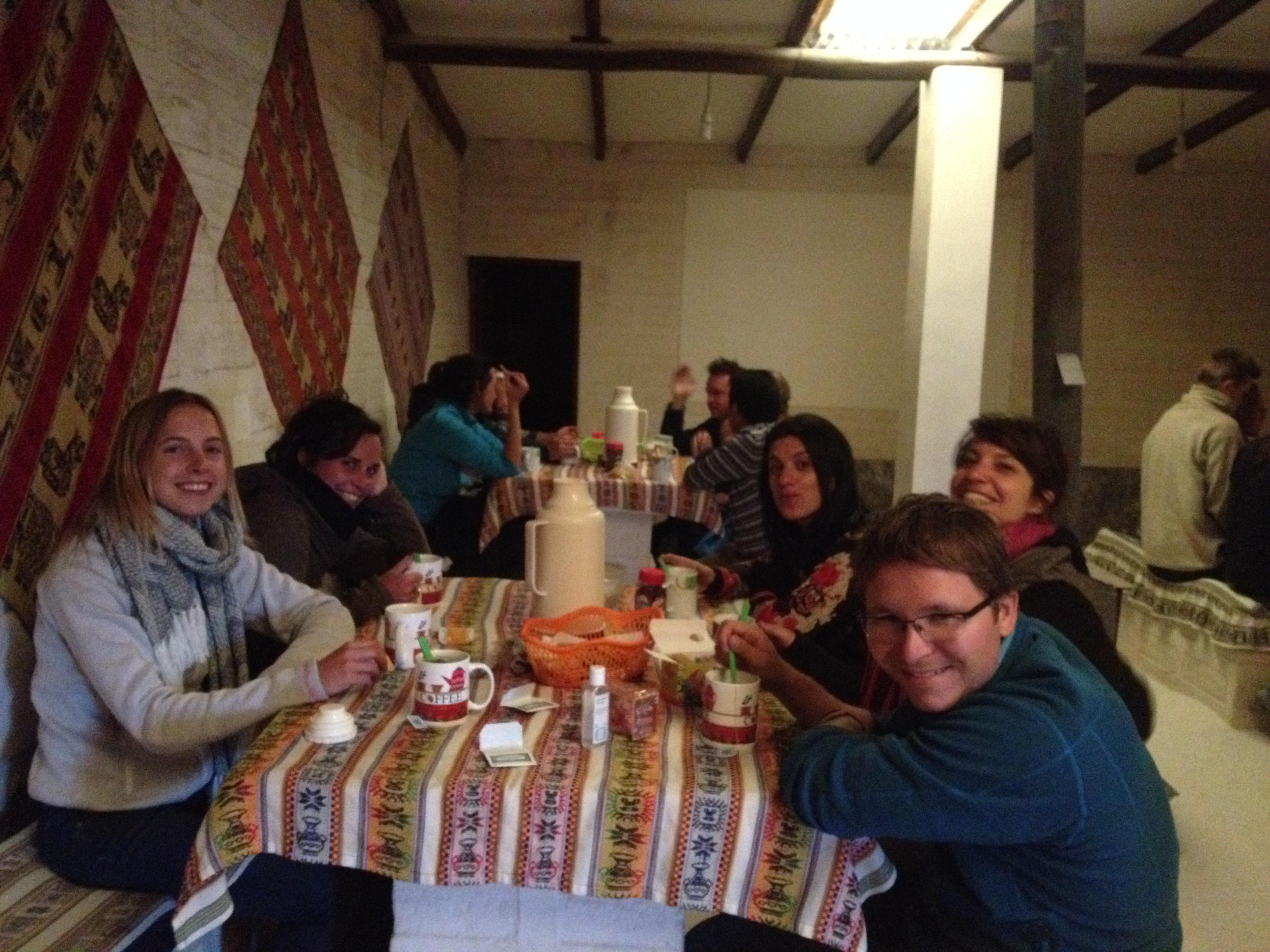
After an early breakfast we drove further south to see some volcanos and lagoons. We had a short stop at a semiactive volcano, called Ollague.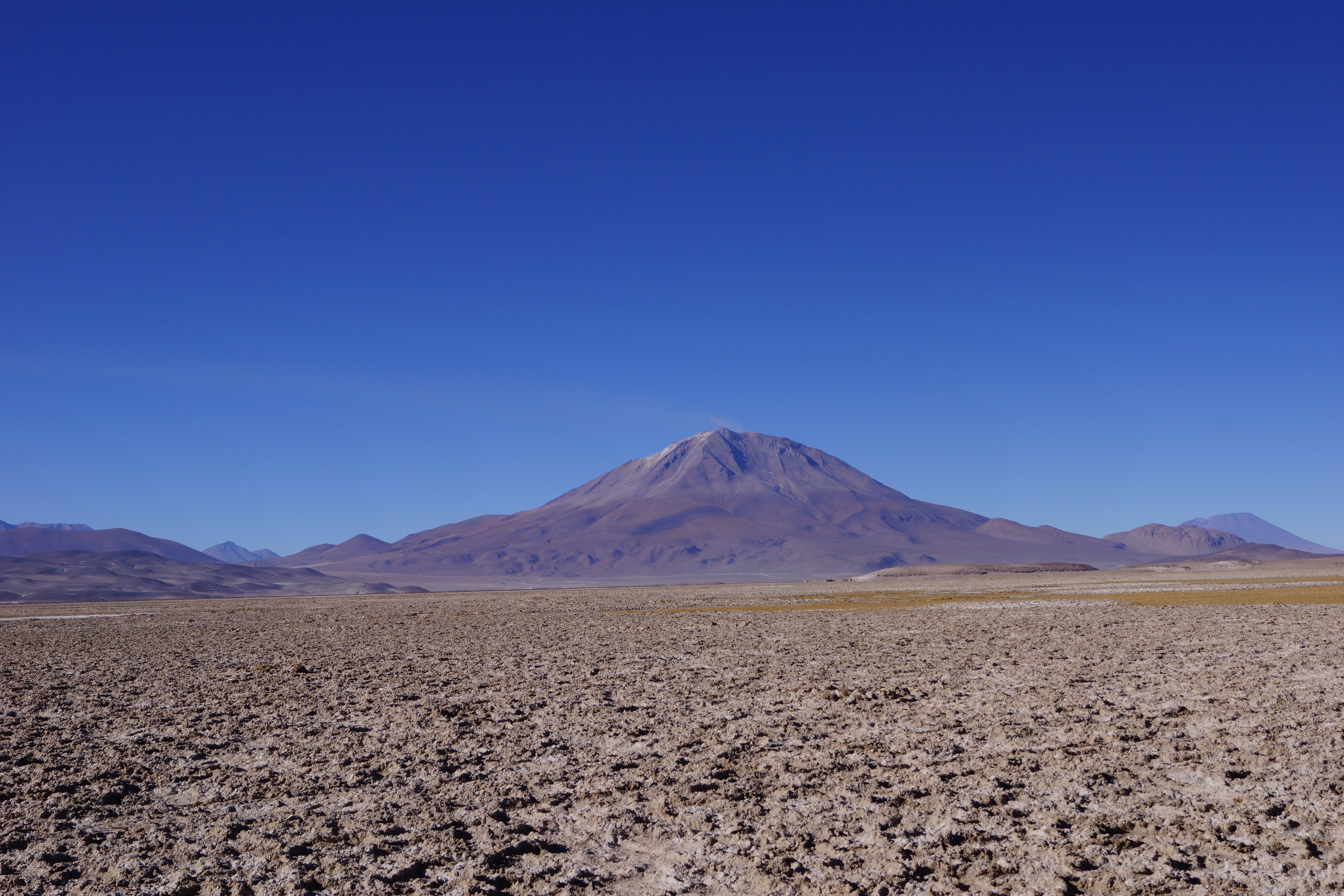
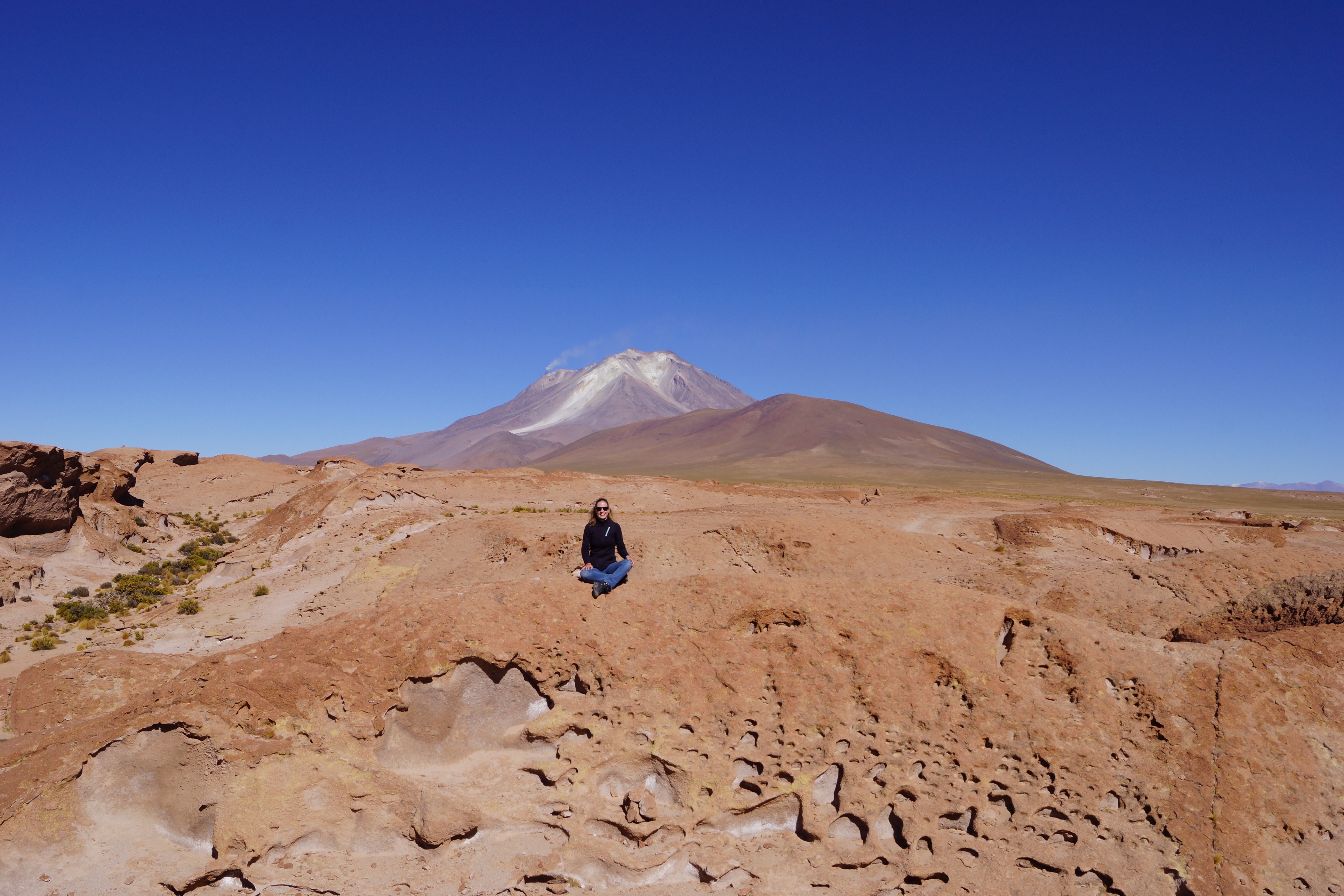
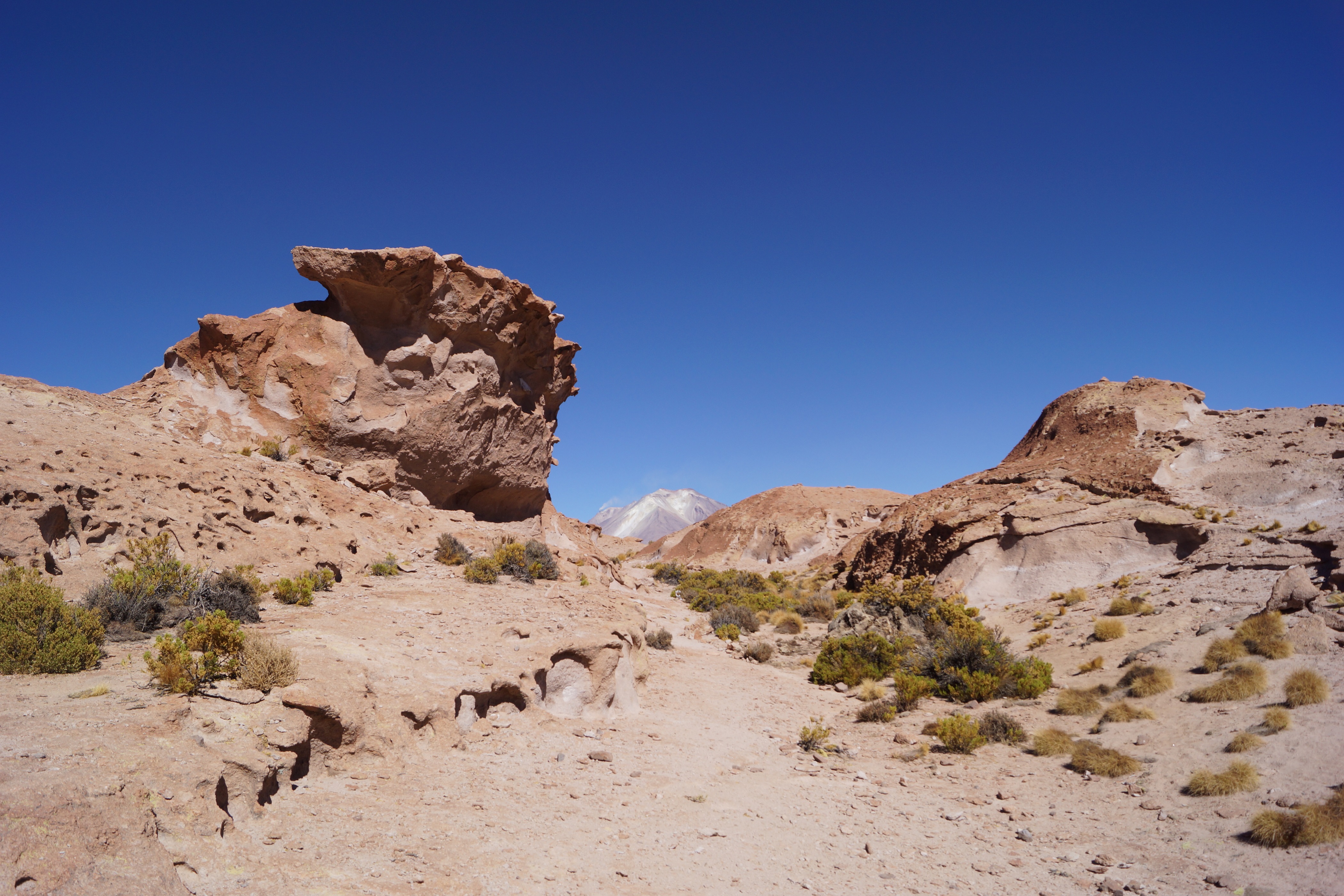
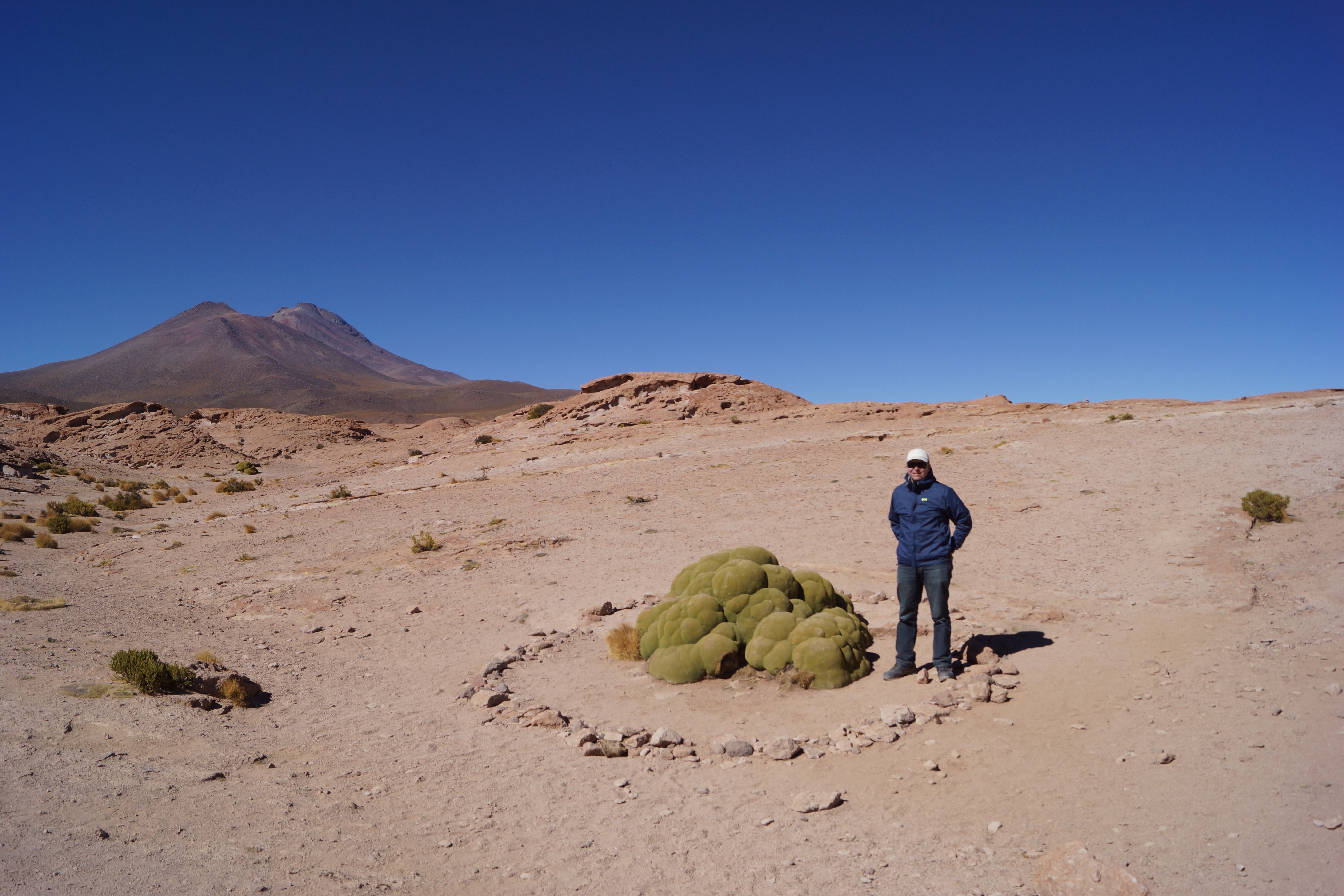 Then we visited three high altitude lagoons: Cañapa, Hedionda and Chiarkota. All of them were just so picturesque; the flamingos, the deep blue water and the mountains - these pictures do not even come close to the beauty we had the pleasure to enjoy there. The best part was, that we had this amazing landscape all to ourselves, because we were quite early and therefore ahead of all the other tour groups. How lucky is that!
Then we visited three high altitude lagoons: Cañapa, Hedionda and Chiarkota. All of them were just so picturesque; the flamingos, the deep blue water and the mountains - these pictures do not even come close to the beauty we had the pleasure to enjoy there. The best part was, that we had this amazing landscape all to ourselves, because we were quite early and therefore ahead of all the other tour groups. How lucky is that!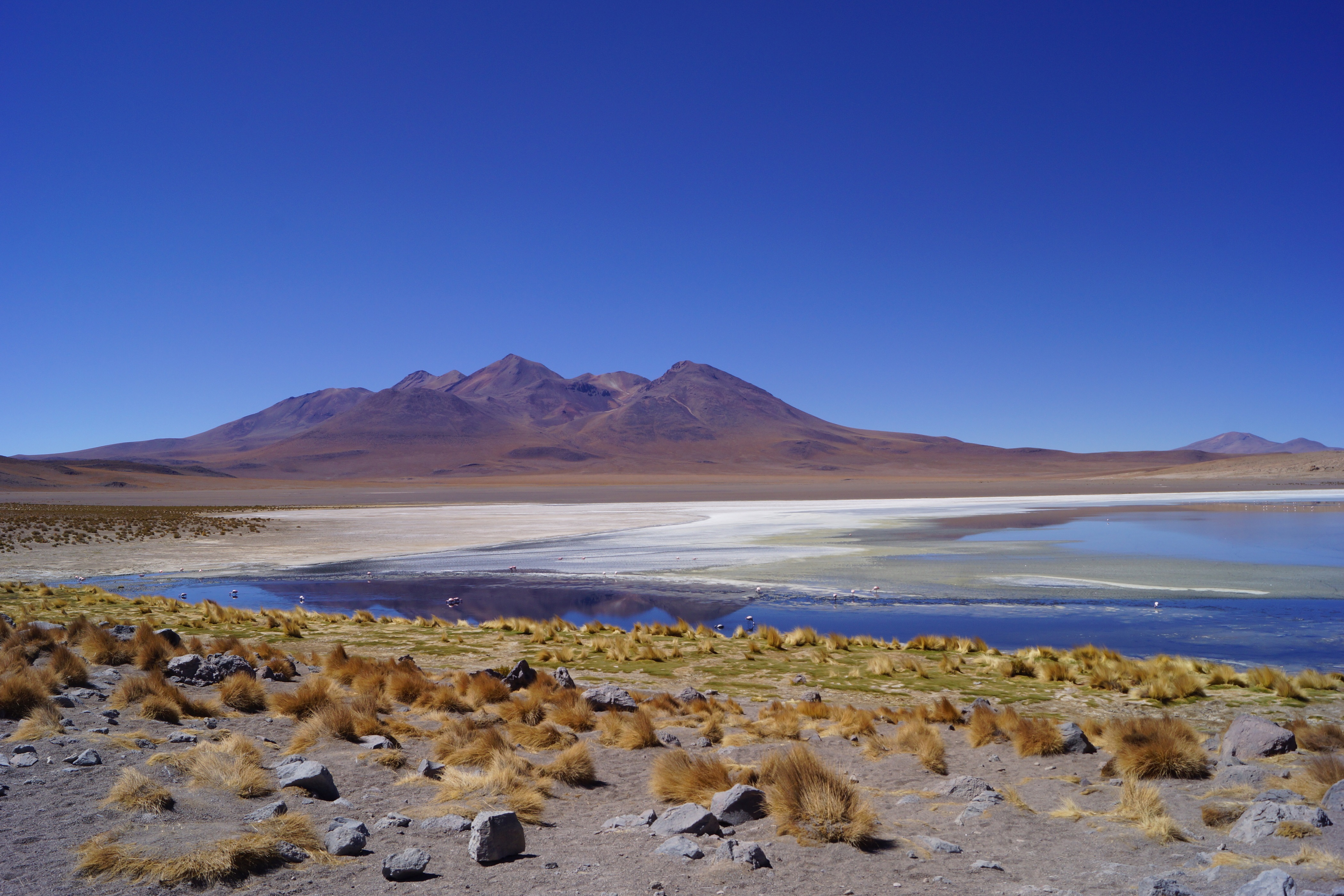
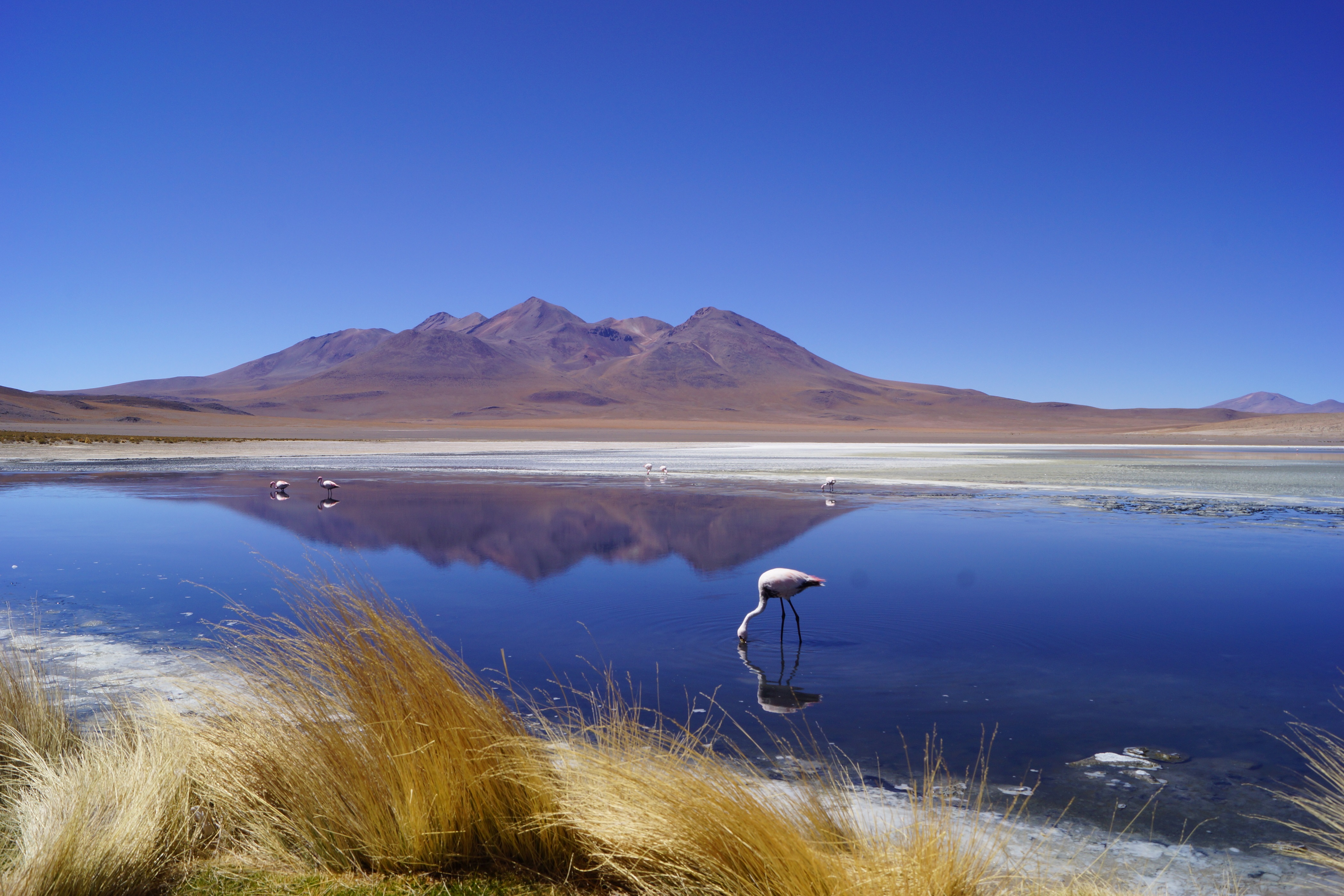
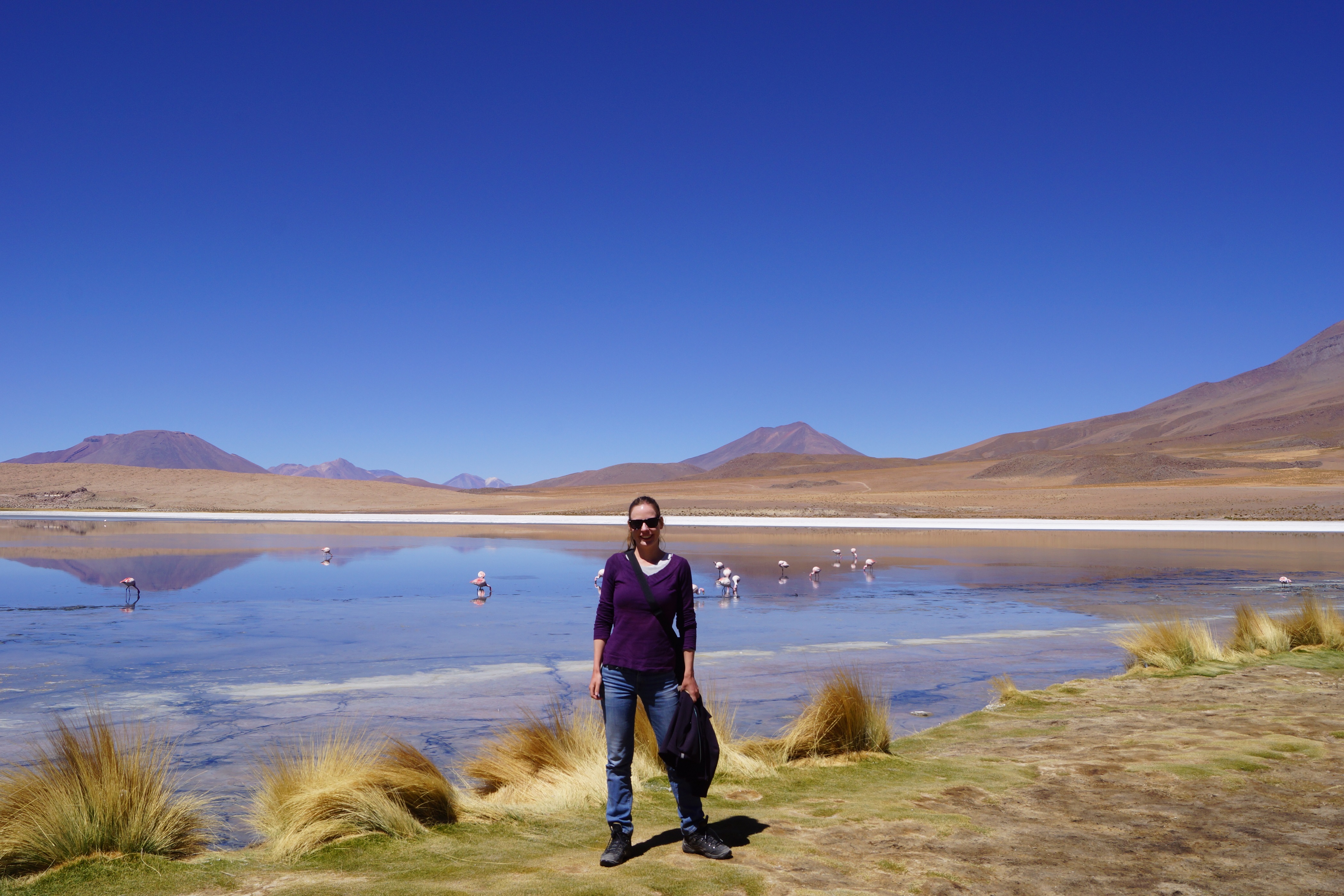
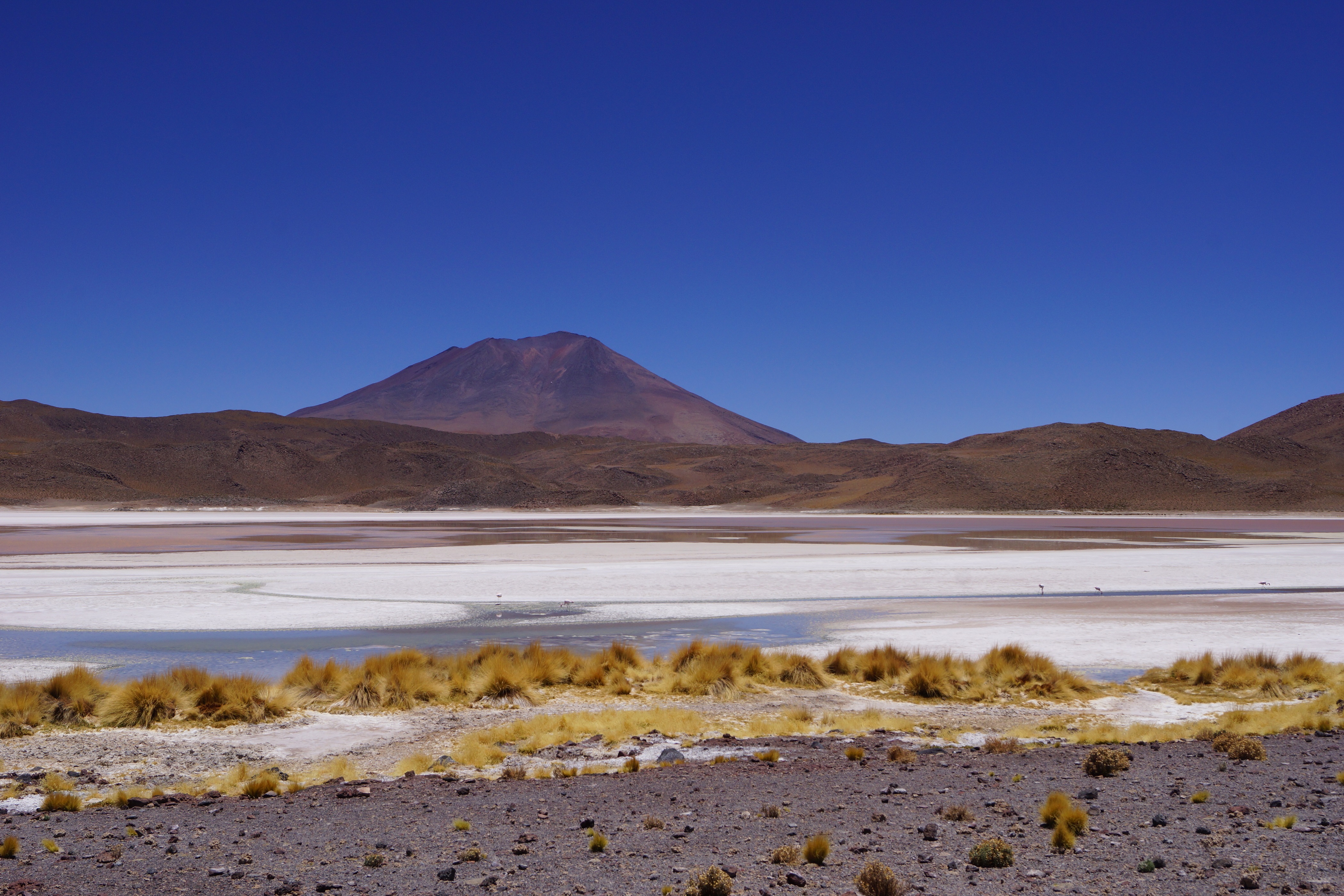
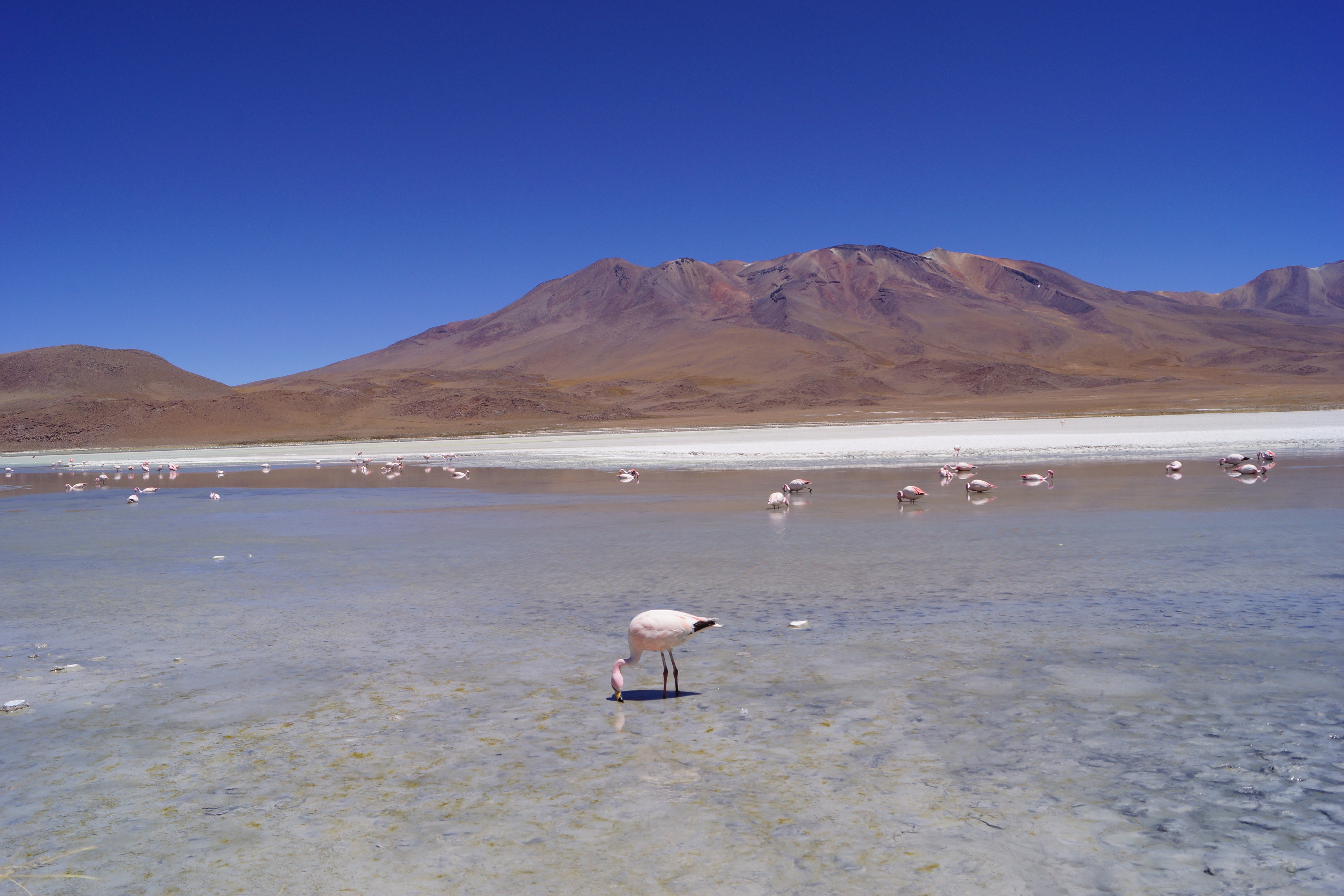
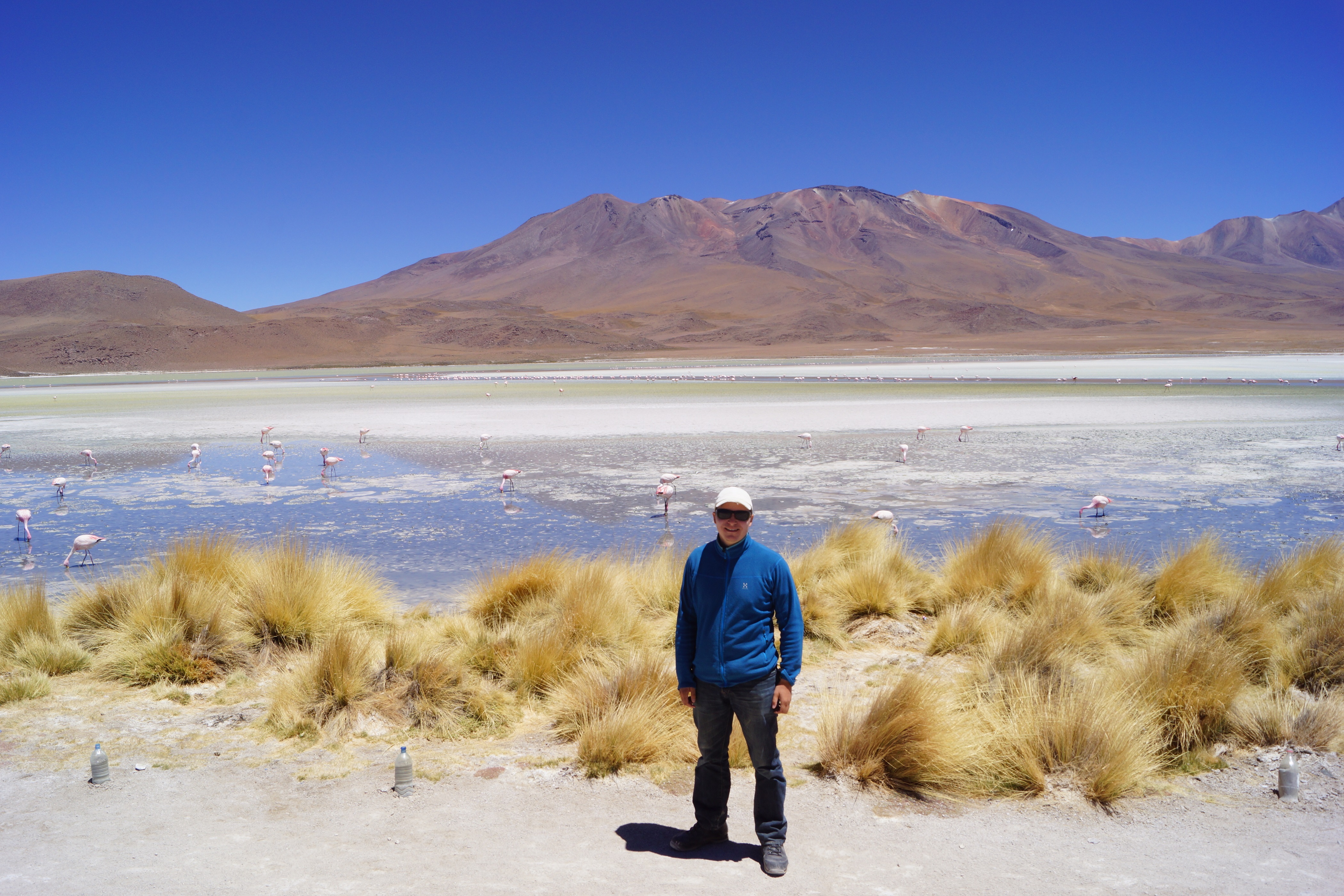
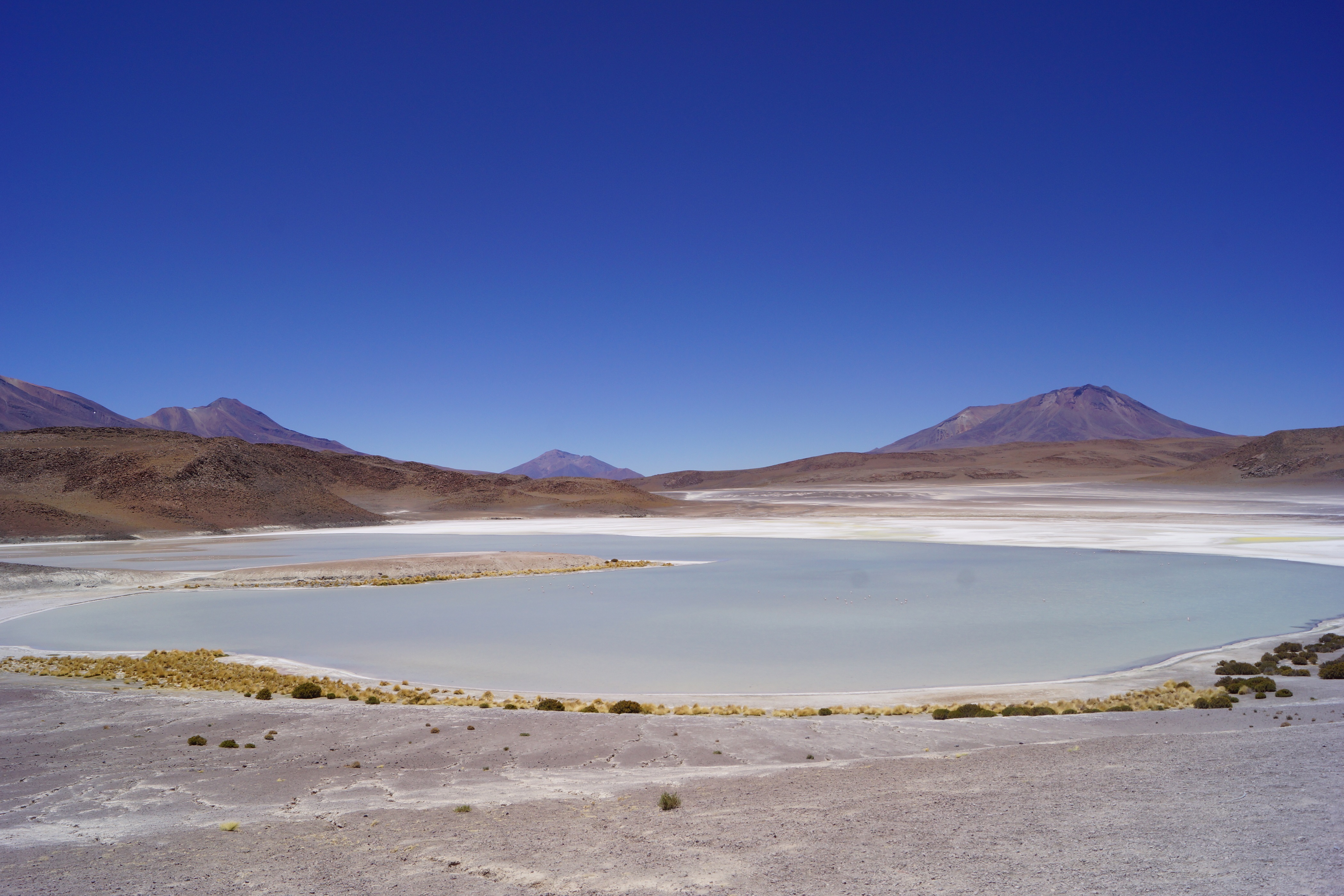 After the lagoons we drove to Arbol de Piedra; a stone tree that was craved out by the wind.
After the lagoons we drove to Arbol de Piedra; a stone tree that was craved out by the wind.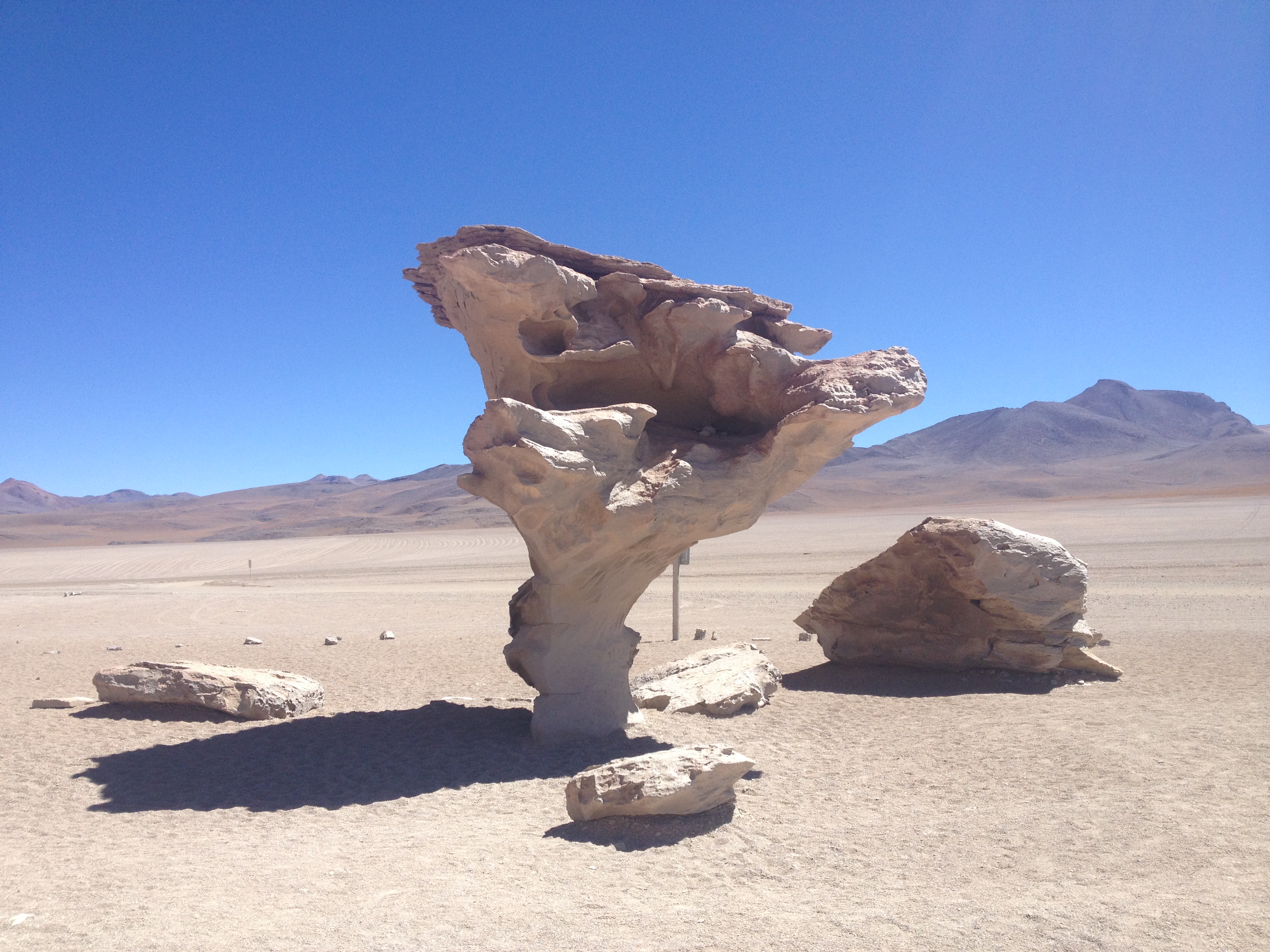
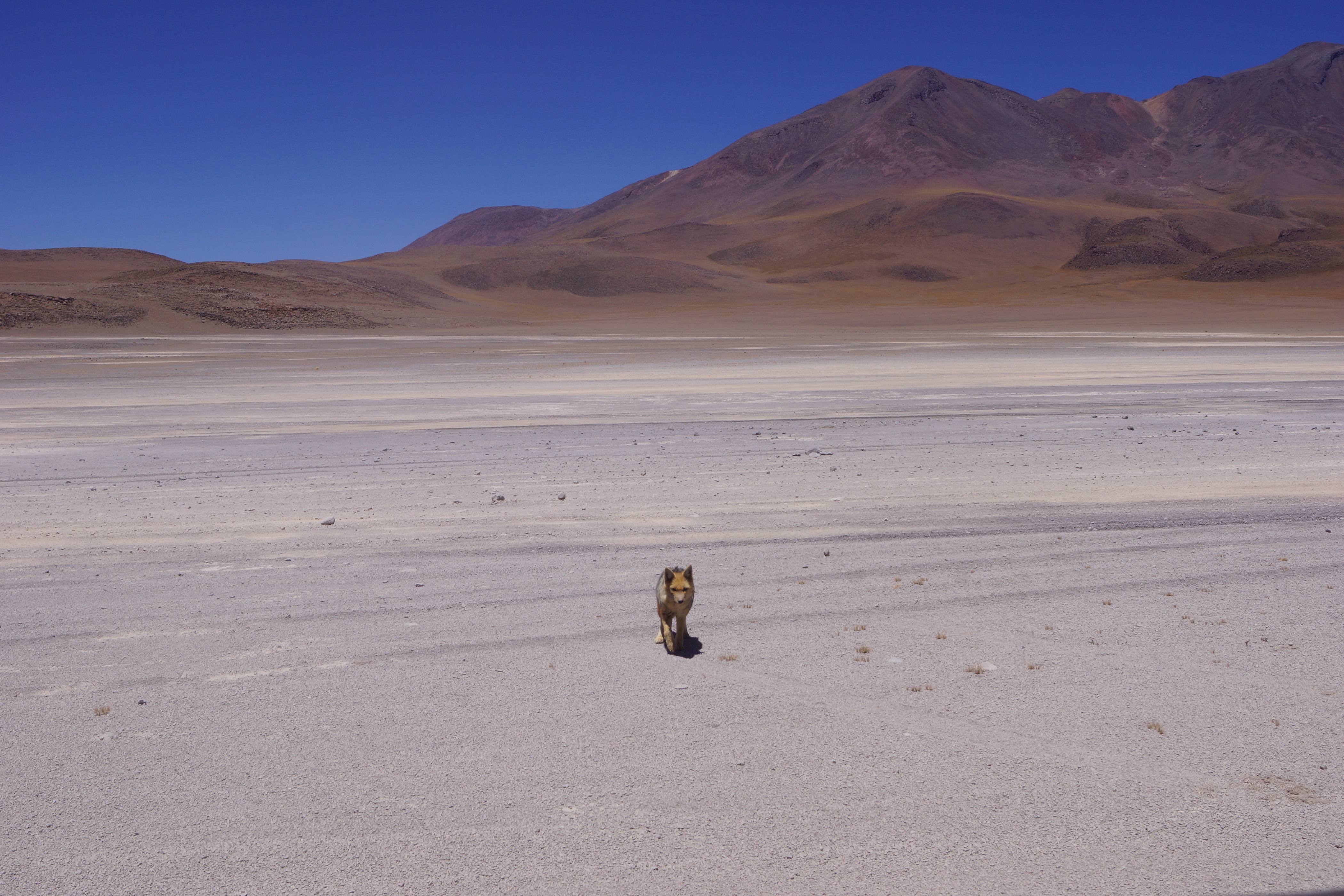 Laguna Colorada has a special reddish color thanks to some algae that lives in it. The white-colored islands in the lagoon are borax sediments, that give a nice contrast to the red water.
Laguna Colorada has a special reddish color thanks to some algae that lives in it. The white-colored islands in the lagoon are borax sediments, that give a nice contrast to the red water. 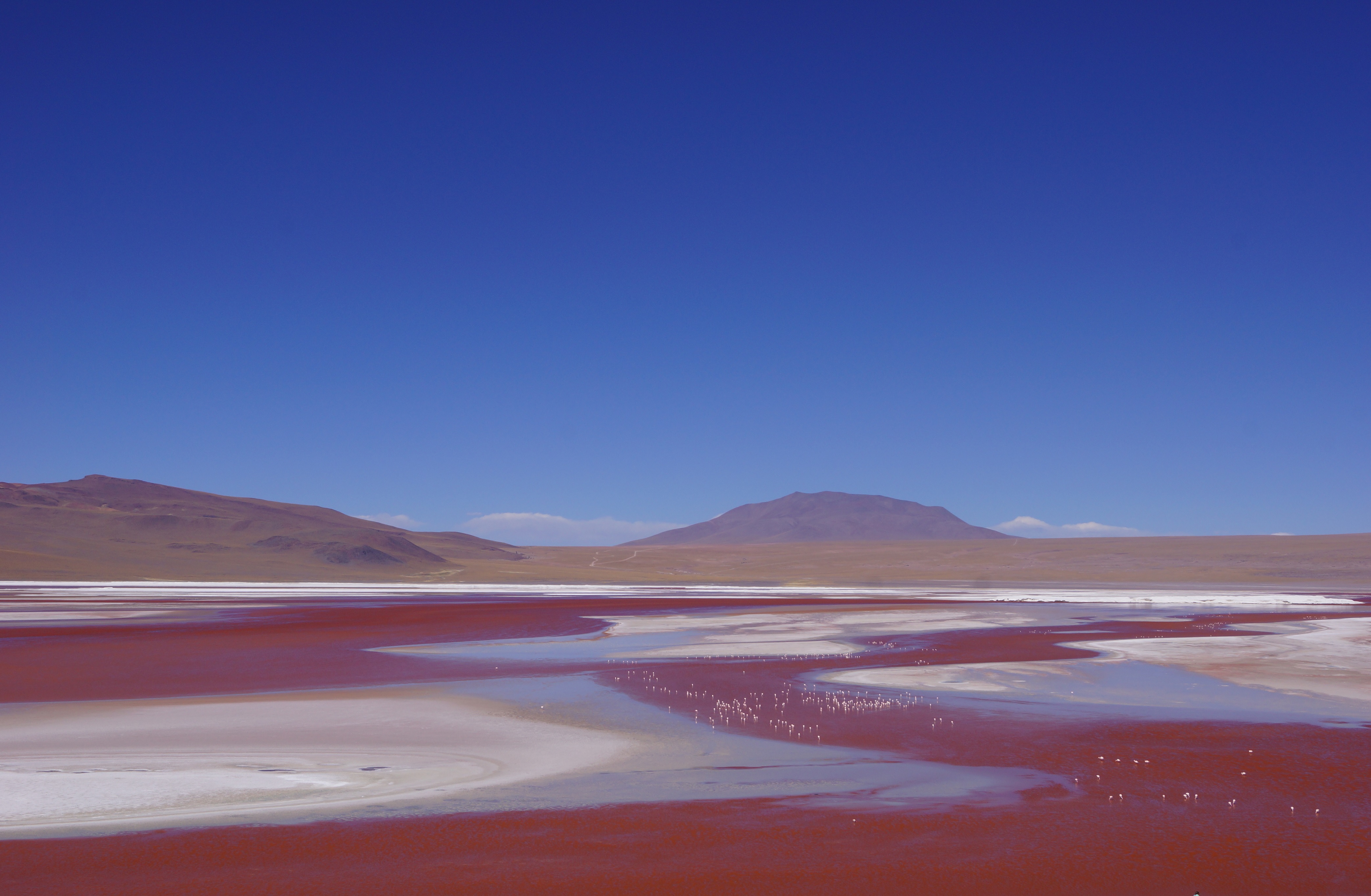 We stopped at two viewpoints to take some pictures and then had some time to walk around and enjoy the beautiful scenery.
We stopped at two viewpoints to take some pictures and then had some time to walk around and enjoy the beautiful scenery.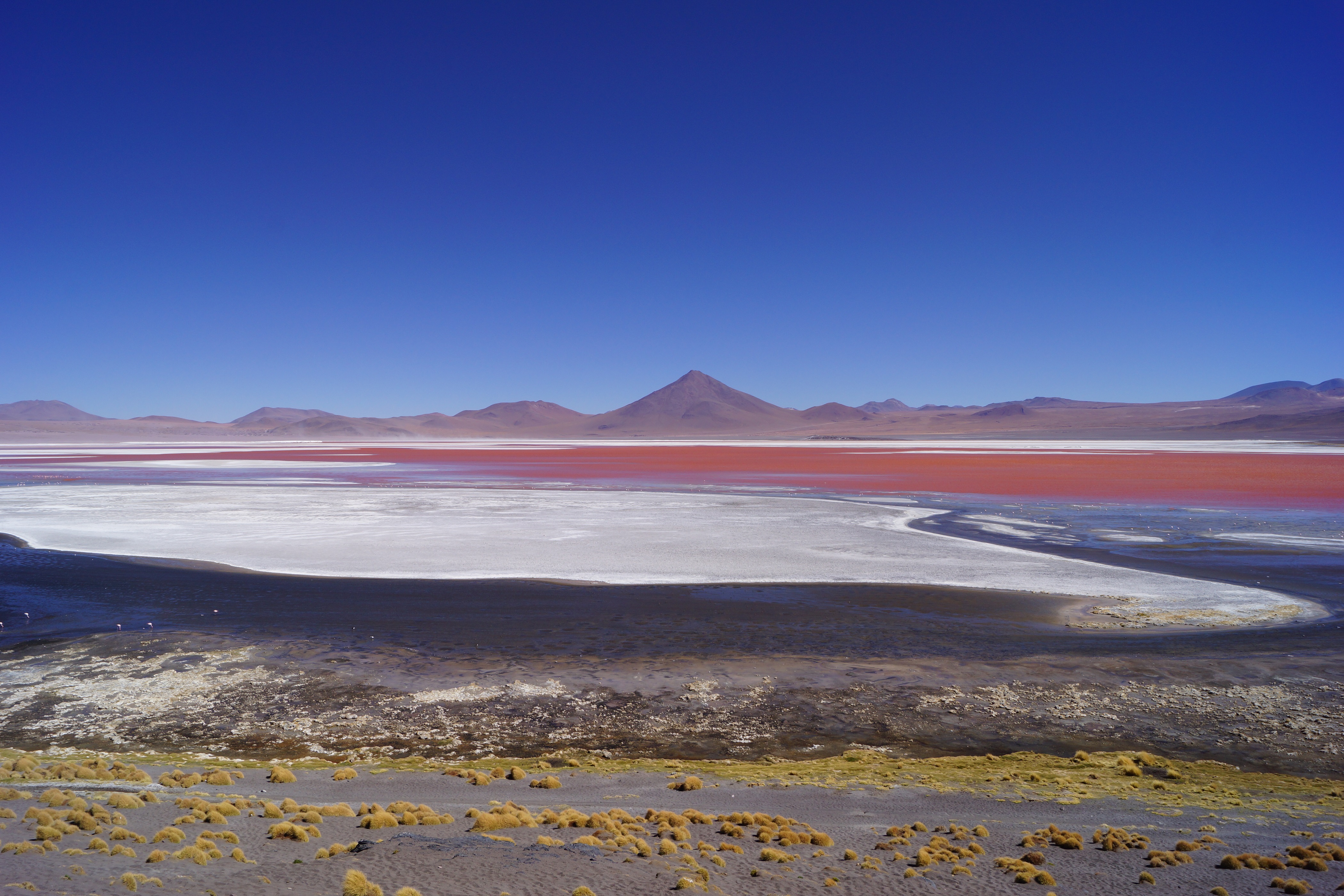
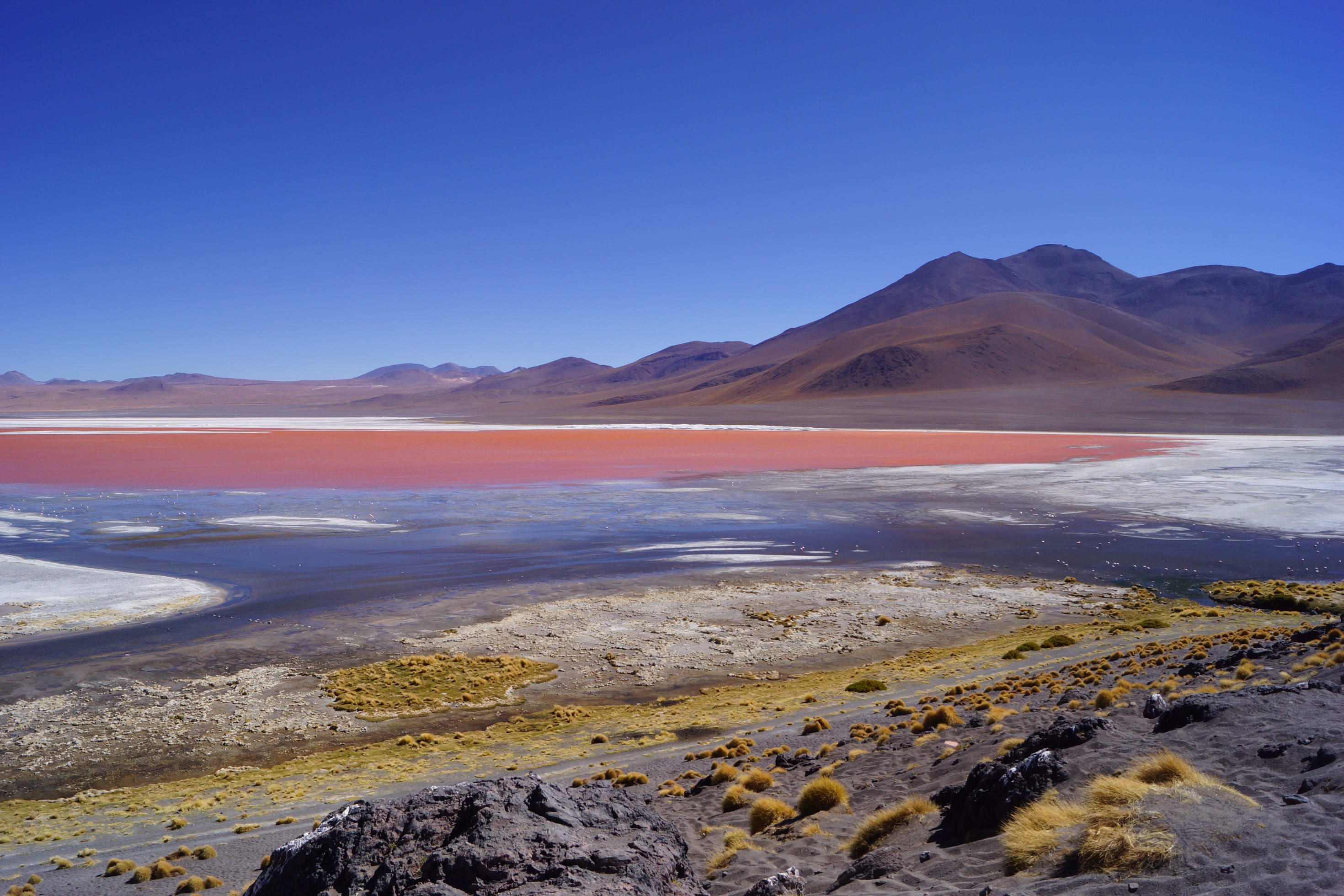
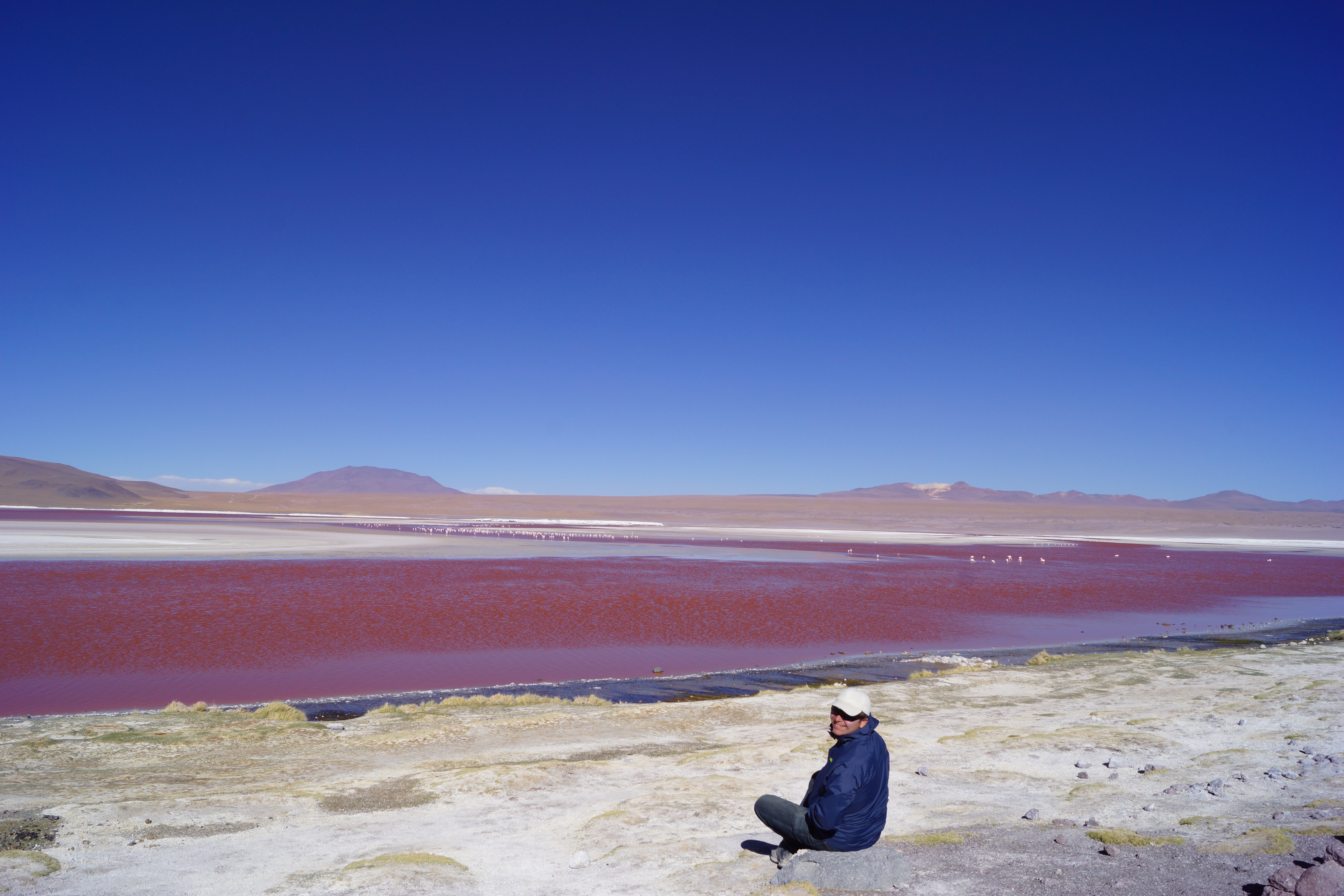
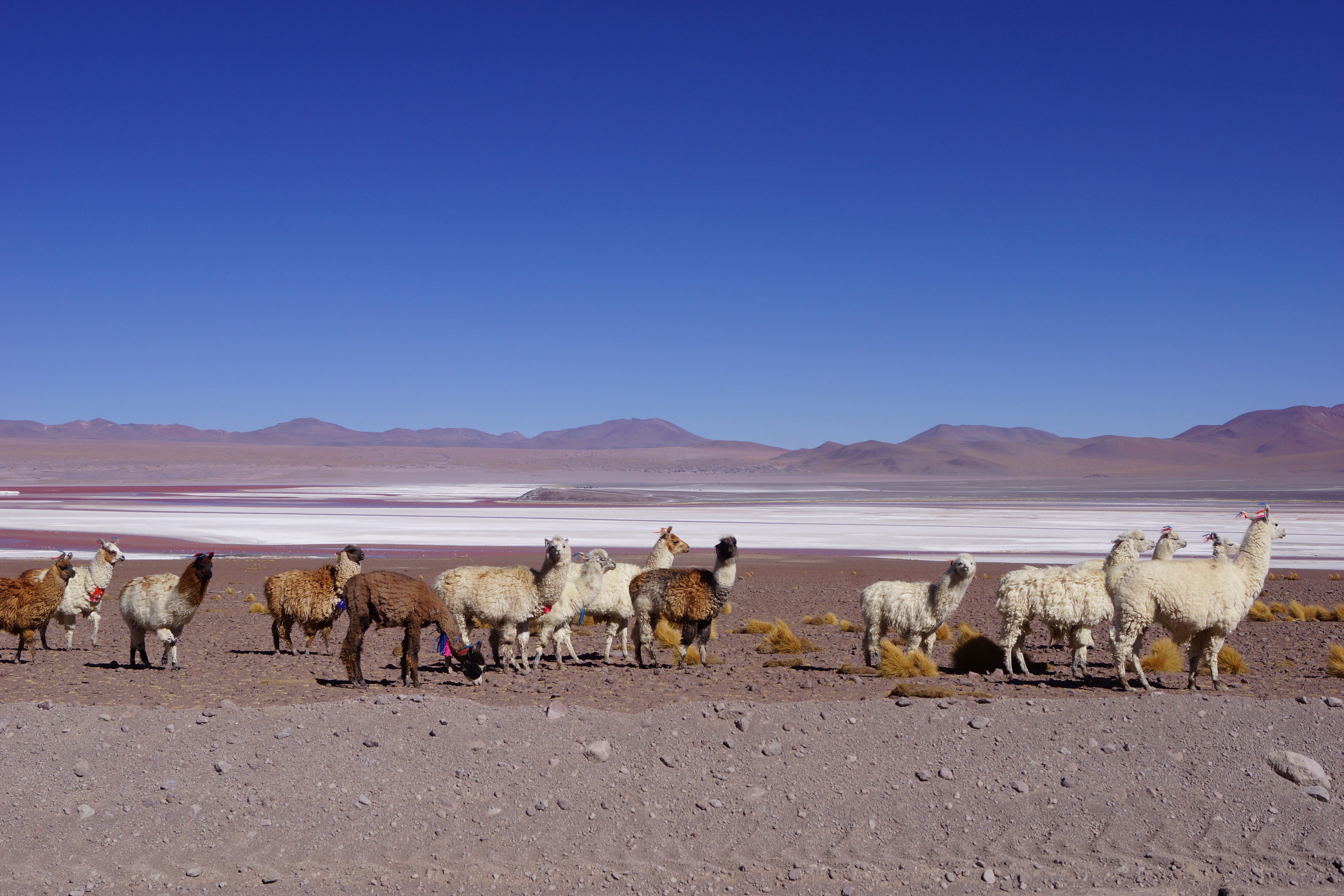
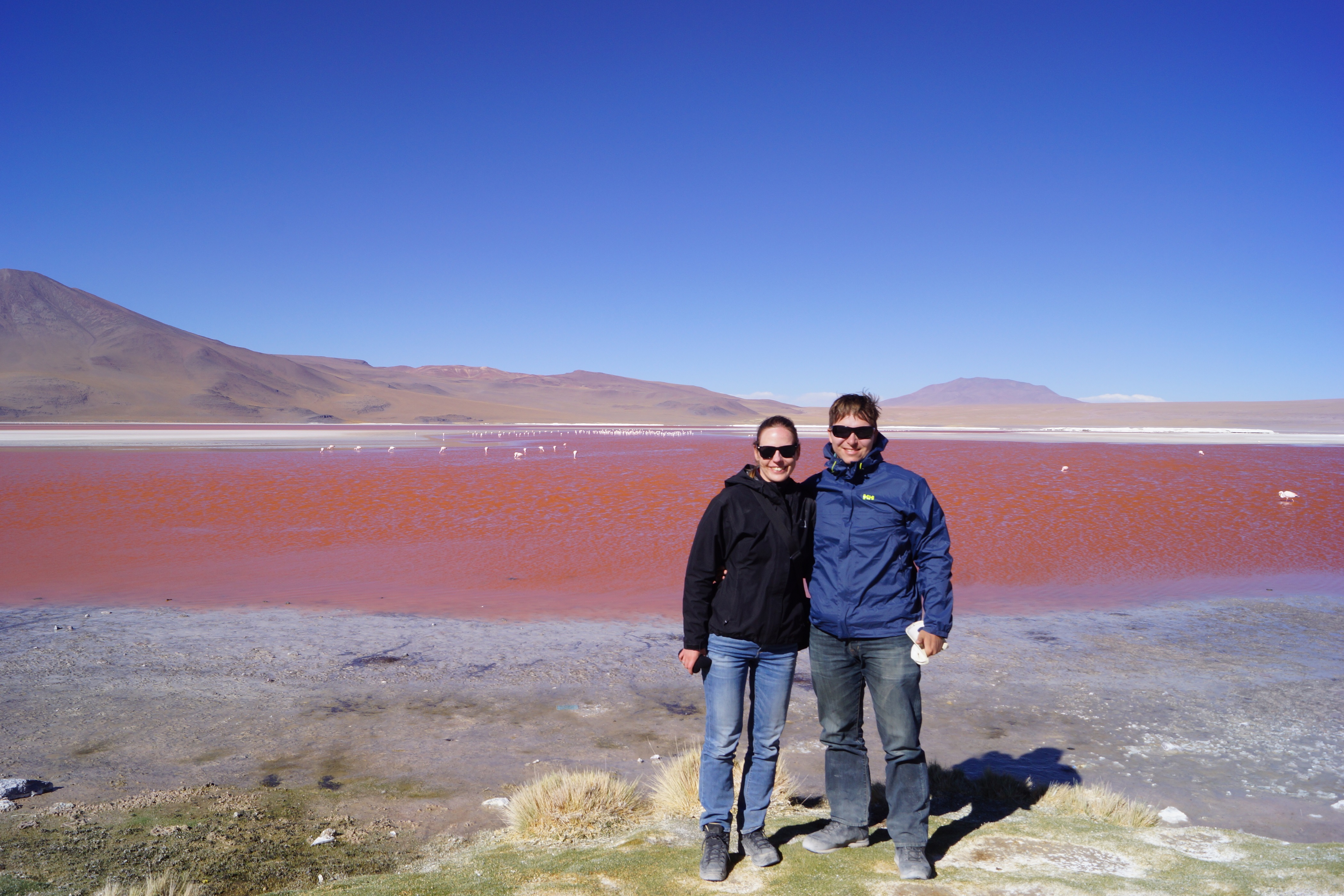
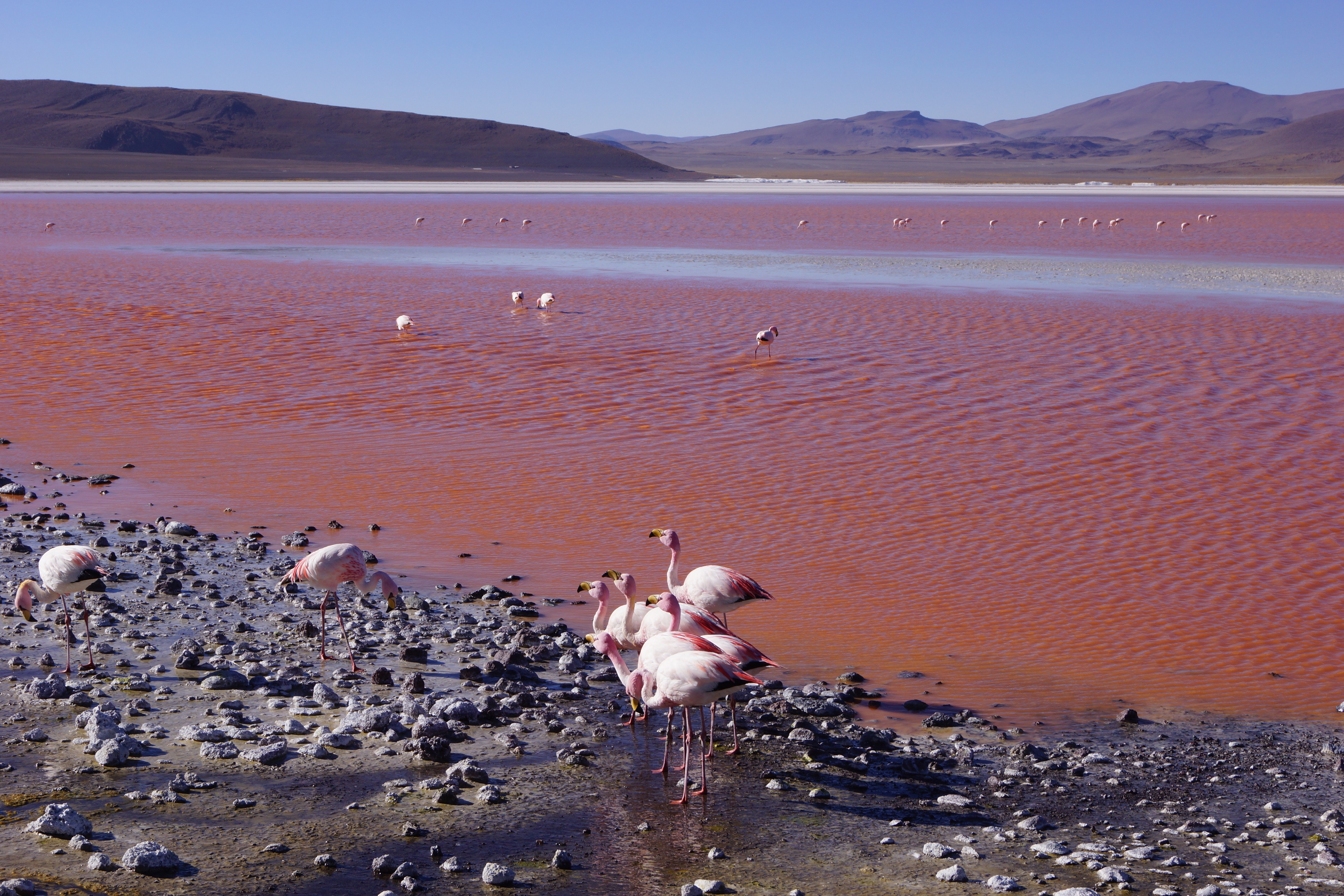
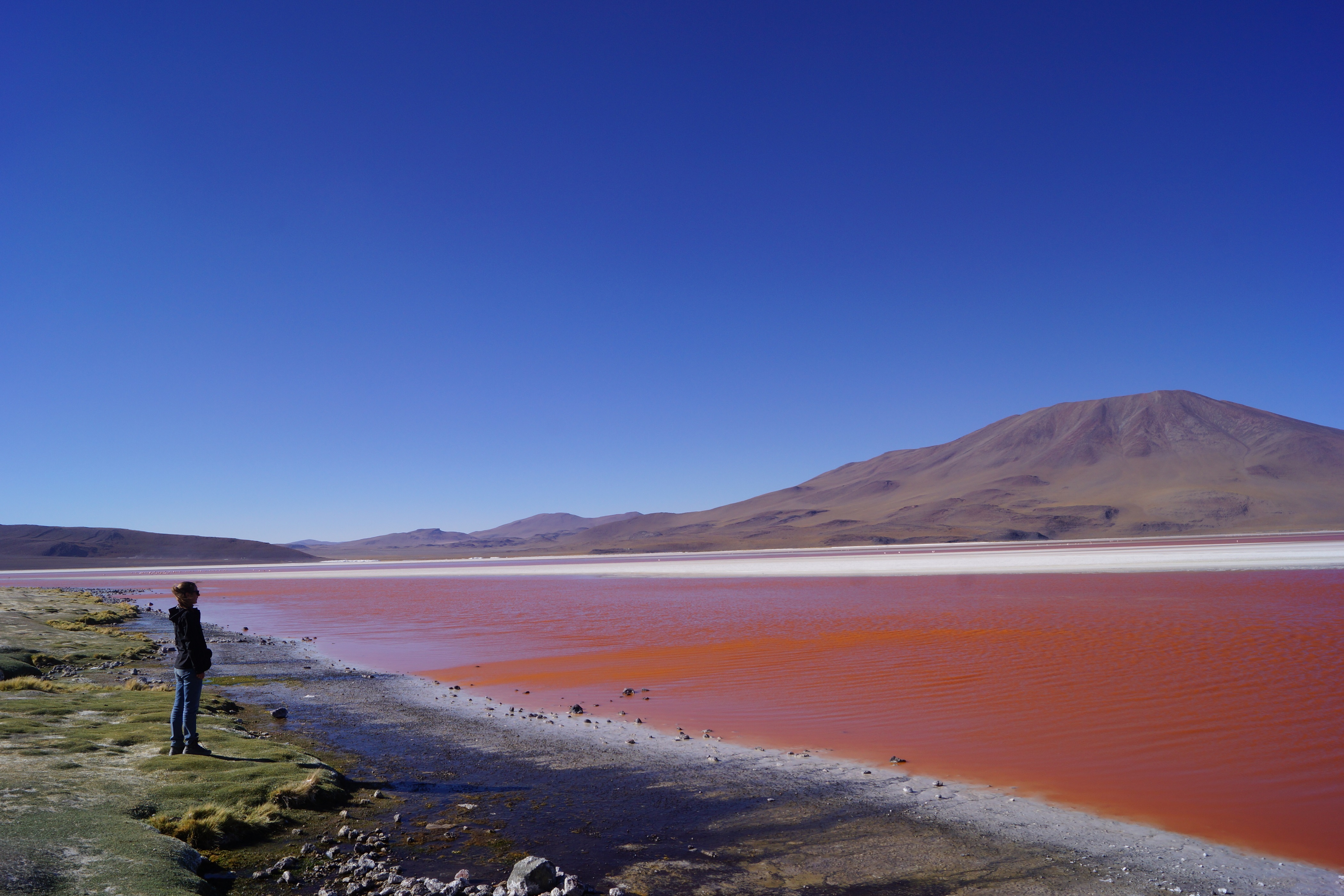 We have made a short video of Laguna Colorada and its flamingos:
We have made a short video of Laguna Colorada and its flamingos:
On the second day we spent the night in an unheated dorm room close to Laguna Colorada at an altitude of 4300m. The temperature of our room was minus 5-7 degree Celsius, so despite I kept all my clothes on and I had a sleeping bag and a couple of blankets, I could not sleep at all that night. I was just lying there and freezing until 4am, when we needed to get up in order to make our connection at the Chilean border. But not Kasper; he was not bothered by the cold at all; he slept like a baby. All accommodations around Laguna Colorada are very basic and without heat, no matter which tour company you choose. Instead of sleeping (or trying to) some backpackers chose to party all night in the local shop, which was also functioning as a local tavern.
Day 3
On the last day we had an early start; we drove to Sol de Manaña geothermal field (4850m) before breakfast. Tour guides usually tell people that it is a geyser field, but it is not true; Sol de Manaña is an area with intense volcanic activity; it has mud lakes, sulphur springs and steam pools, but no geysers.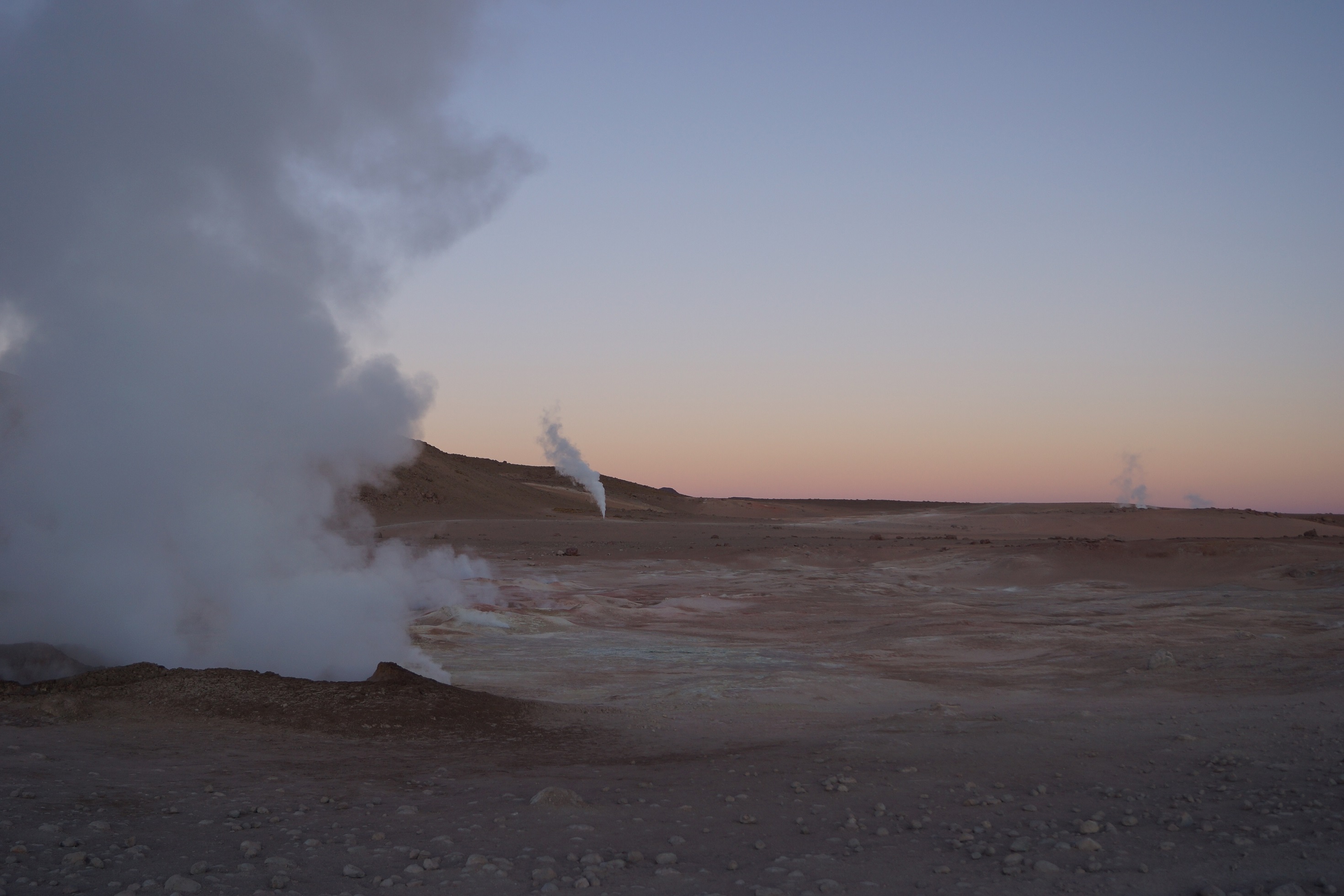
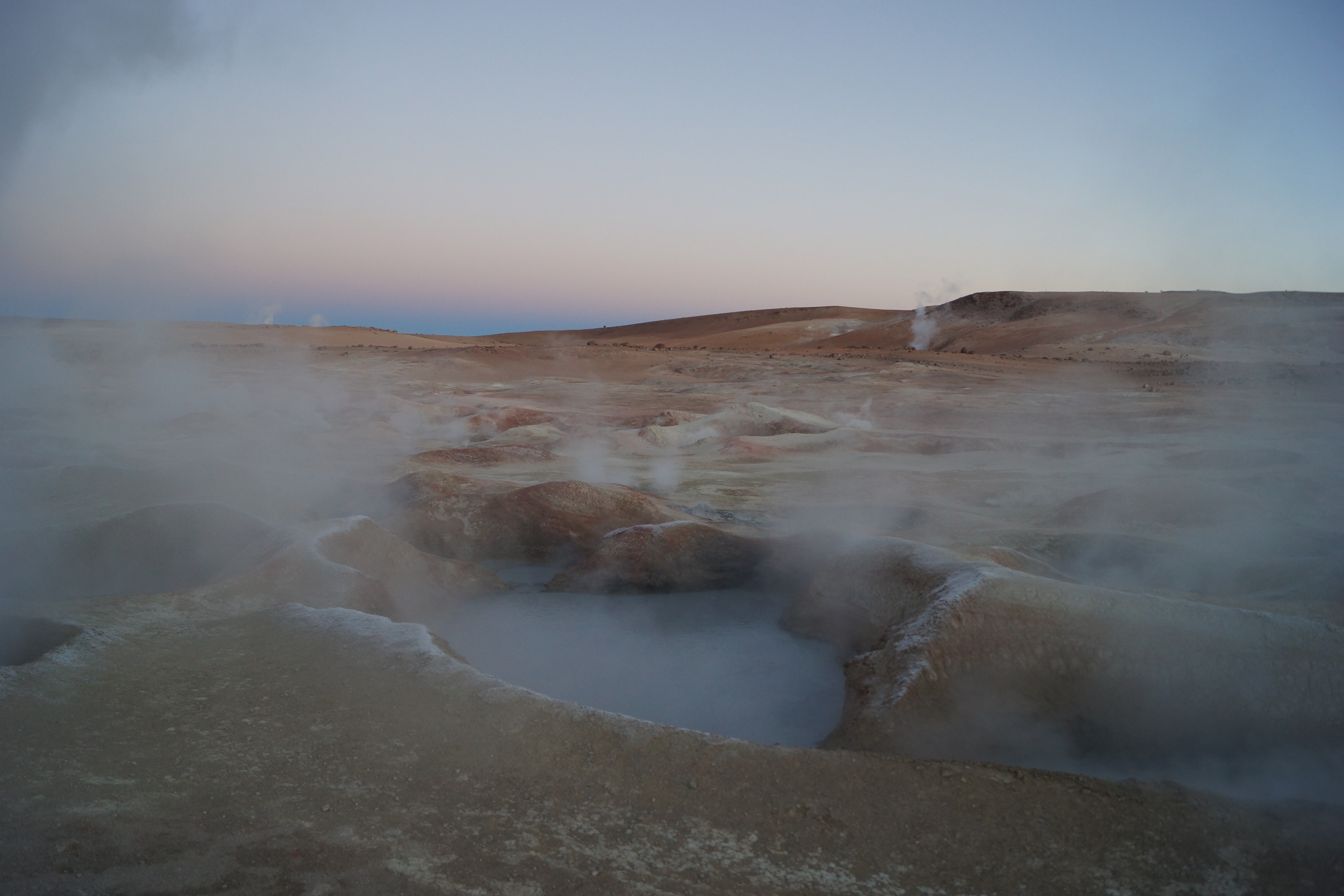 In spite of the steam pools, the temperature was well below zero, so I just kept on freezing...
In spite of the steam pools, the temperature was well below zero, so I just kept on freezing...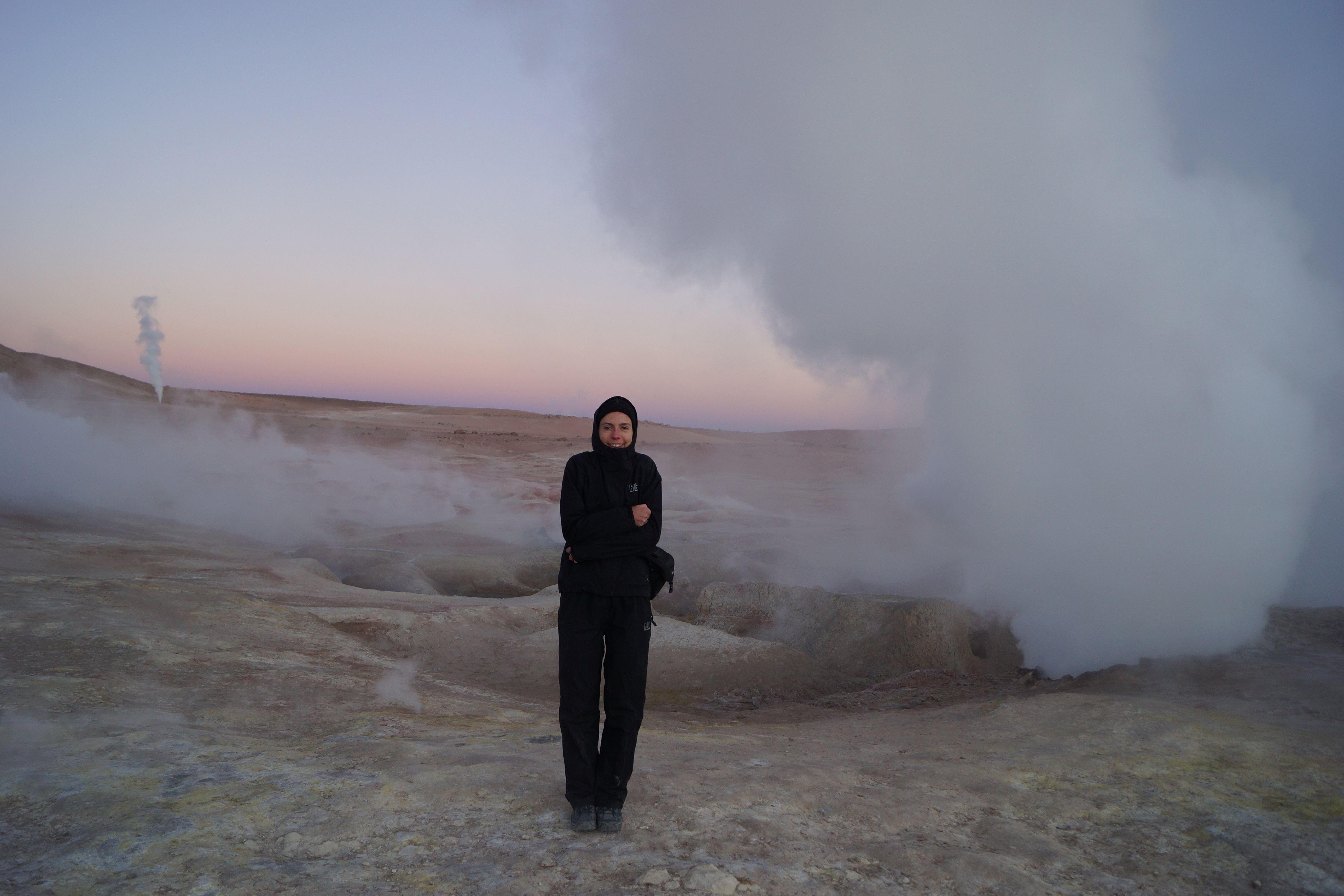 In order to warm things up a little bit we stopped by the Polques hot springs. It was sooo amazing to soak ourselves in the mineral-rich and more importantly hot water.
In order to warm things up a little bit we stopped by the Polques hot springs. It was sooo amazing to soak ourselves in the mineral-rich and more importantly hot water.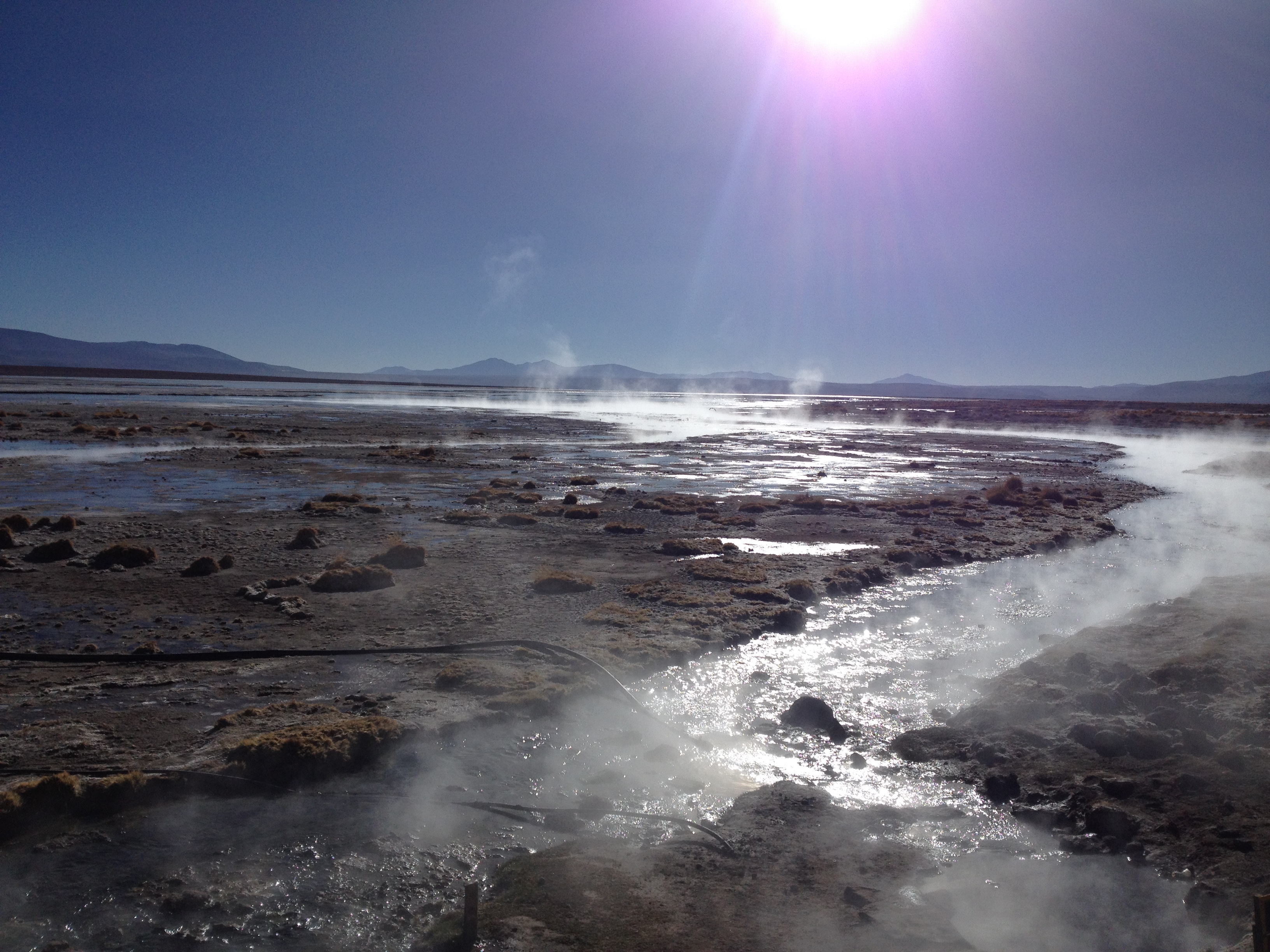
Before we reached the Chilean border we had a couple of short stops. The first was the Dalí Desert, a landscape that resembles the surrealist paintings of Salvador Dalí, but never had been visited by him.
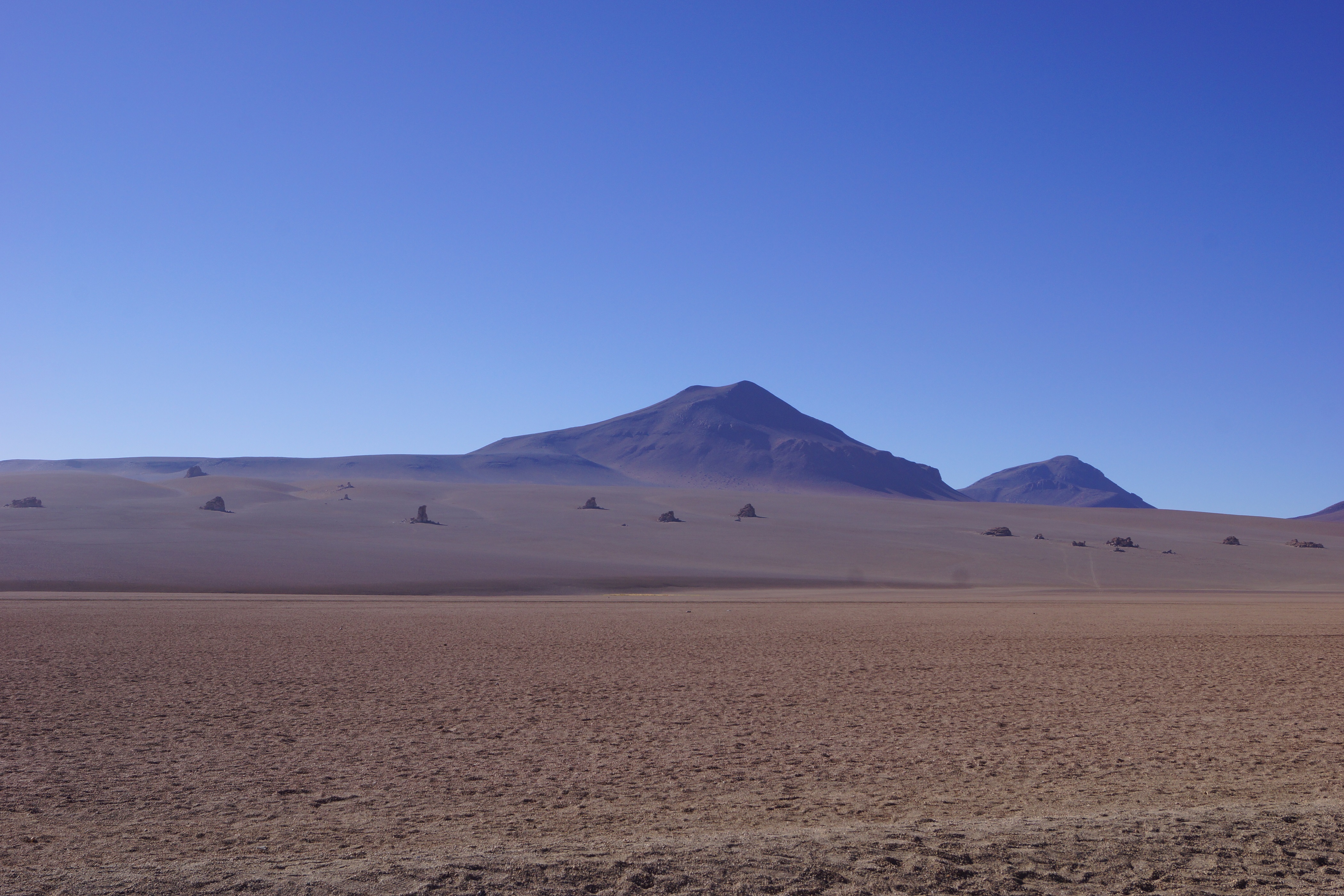 Then we saw the Green Lagoon (Laguna Verde), which supposed to have a nice green color due to arsenic, lead, copper and other heavy metals in the water, but it was not really green that day, we had no idea why. By then we were very close to the border; on the other side of Licancabur volcano - the one behind Kasper - lies San Pedro de Atacama.
Then we saw the Green Lagoon (Laguna Verde), which supposed to have a nice green color due to arsenic, lead, copper and other heavy metals in the water, but it was not really green that day, we had no idea why. By then we were very close to the border; on the other side of Licancabur volcano - the one behind Kasper - lies San Pedro de Atacama.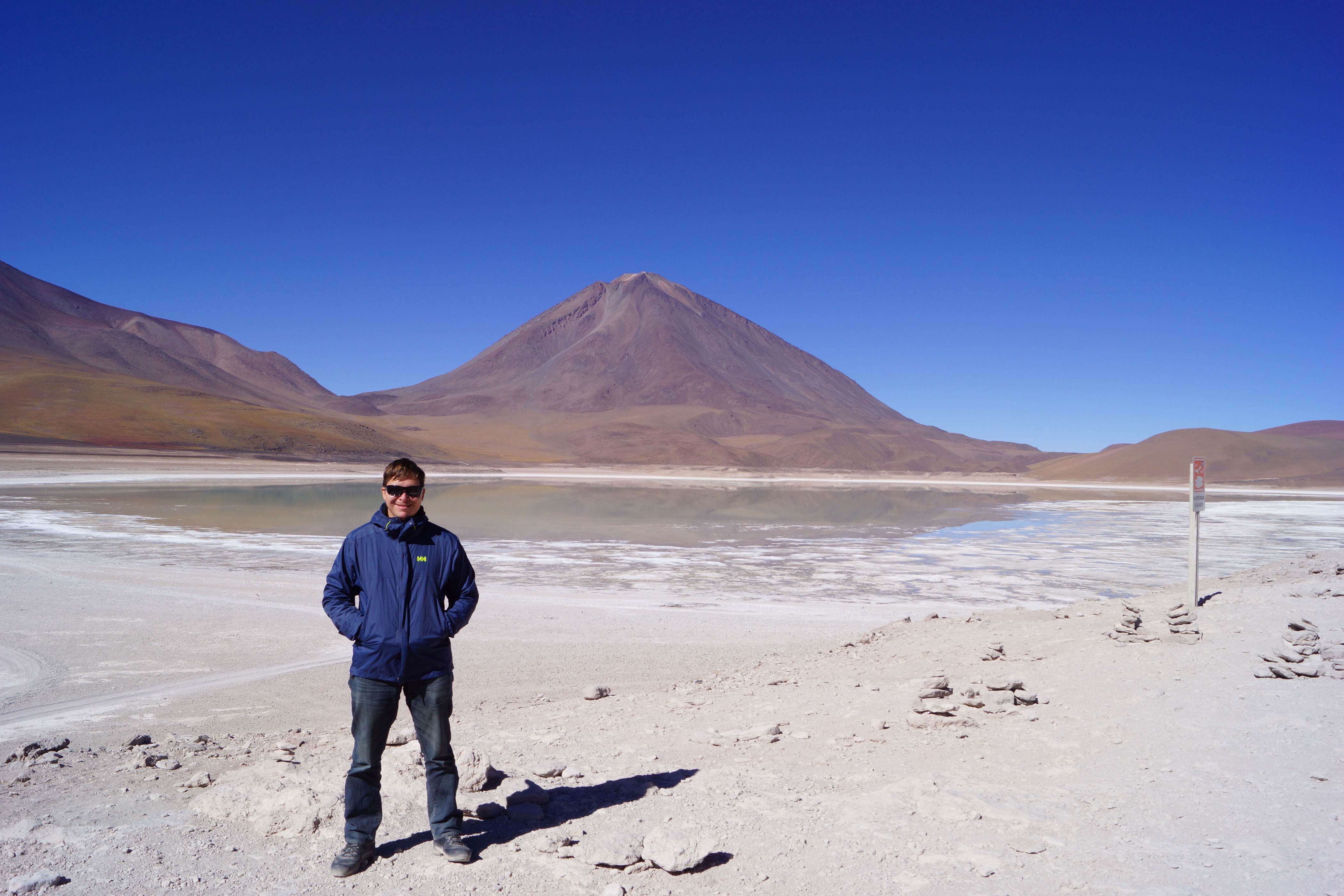 Not far from Laguna Verde is Laguna Blanca (White Lagoon), which has a characteristic white color caused by the high amount of borax and other minerals in the lagoon. We had a few minutes to stop there, before we arrived to the border.
Not far from Laguna Verde is Laguna Blanca (White Lagoon), which has a characteristic white color caused by the high amount of borax and other minerals in the lagoon. We had a few minutes to stop there, before we arrived to the border.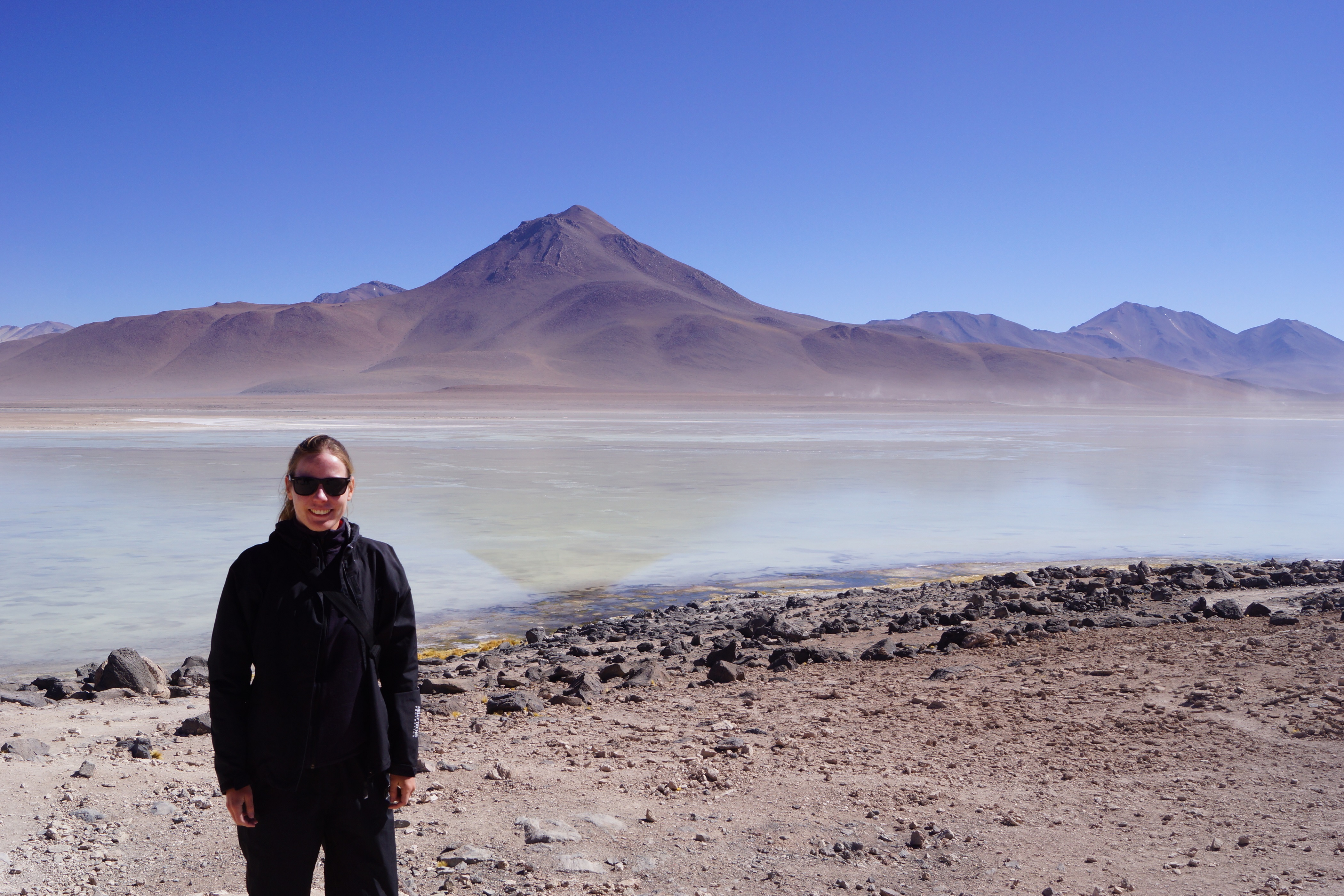 On the border everything went smooth; our connection was already waiting for us there, so we quickly checked out of Bolivia and then drove to San Pedro de Atacama. After checking into Chile and changing into shorts we soon could enjoy the summer weather and the view of Licancabur from the Chilean side. It is crazy how one can go from winter to summer by descending from high to low altitude.
On the border everything went smooth; our connection was already waiting for us there, so we quickly checked out of Bolivia and then drove to San Pedro de Atacama. After checking into Chile and changing into shorts we soon could enjoy the summer weather and the view of Licancabur from the Chilean side. It is crazy how one can go from winter to summer by descending from high to low altitude.